The most comprehensive list of black vegetables you can find on the Internet. Includes fun facts, taste, texture, and uses in cooking! Basically all you need to get to know these black vegetables!
Intro and Disclaimer
Using the definition of vegetable as any edible part of a plant, I have also included black beans, legumes, grains, seeds, and spices in this list of black vegetables. Gotta make sure that this article really lives up to its title of the most comprehensive one on the internet, you know 😉
And a short disclaimer, some of these vegetables may not look really black in color. However, I still include them since they have the word “black” in their name.
Alright, without further ado………🥁🥁🥁
Vegetables
1. Black Eggplant

Fun fact(s): Eggplants have numerous varieties in shape and color. The term “eggplant” originated from white varieties that resembled white eggs, as you can see in my List of 35 White Vegetables with Pictures!
Taste and Texture: Raw black eggplants taste mild and slightly bitter with a tender, zucchini-like texture. When cooked, they become moist and creamy.
Uses: As it also absorbs flavor well, it is a great meat replacement in vegetarian in vegan dishes. Two of my favorite ways to use them are in a Japanese eggplant teriyaki bowl and roasting them like in my harissa eggplant!
2. Black Tomatoes
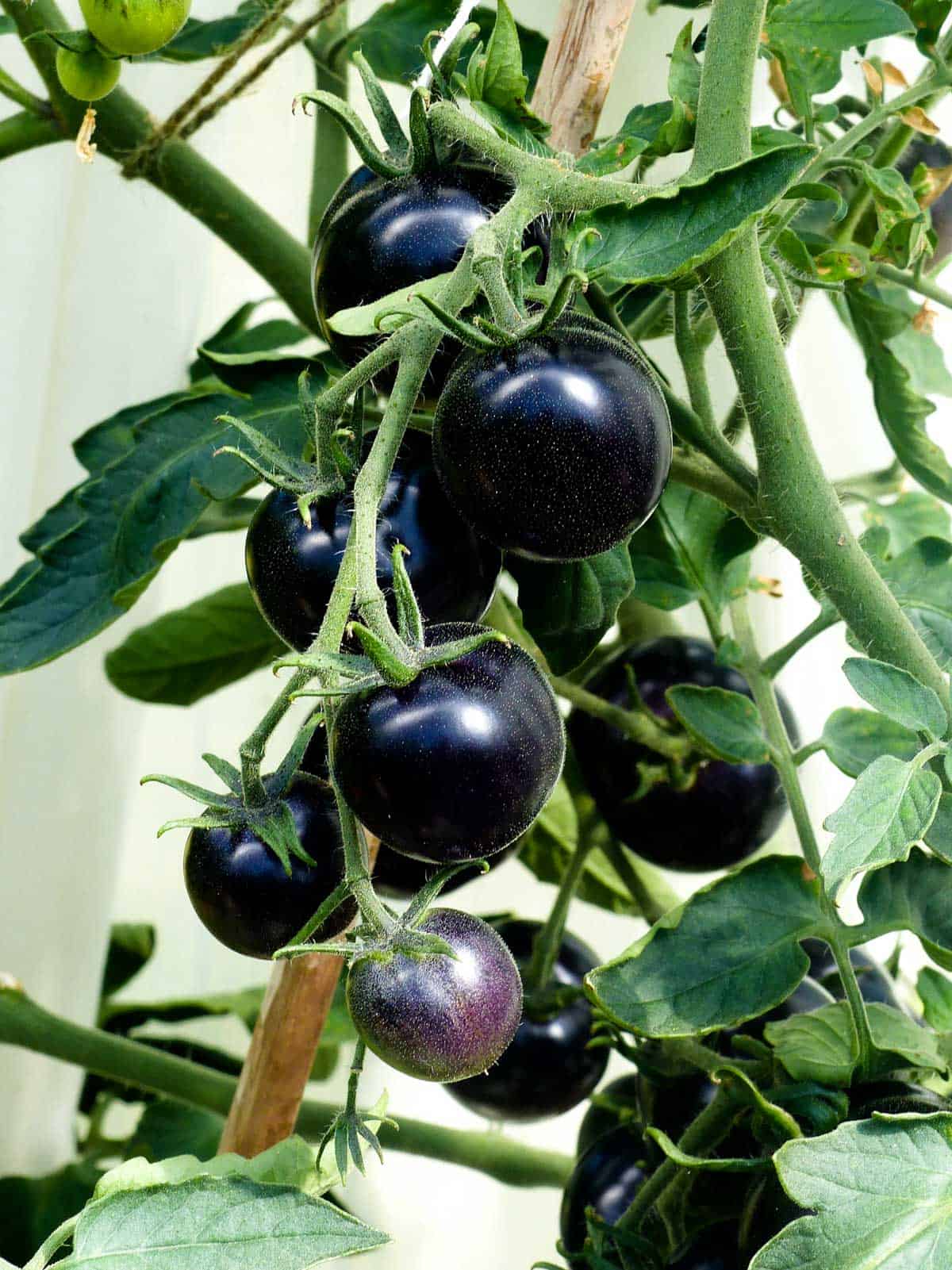
Fun fact(s): These black heirloom tomatoes (or black beauty tomatoes) are grown from seeds that have been passed down for generations. Tomatoes are also botanically considered a fruit, which is why they’re also included in my Black Fruits List!
Taste and Texture: They often have a more complex and sweeter taste when compared to regular red tomatoes. Texture-wise, it is very similar to regular tomatoes.
Uses: Best served raw to showcase their complex flavor profile. Ideal for salads, salsa, sandwiches, bruschetta, and gazpacho!
3. Black Olives
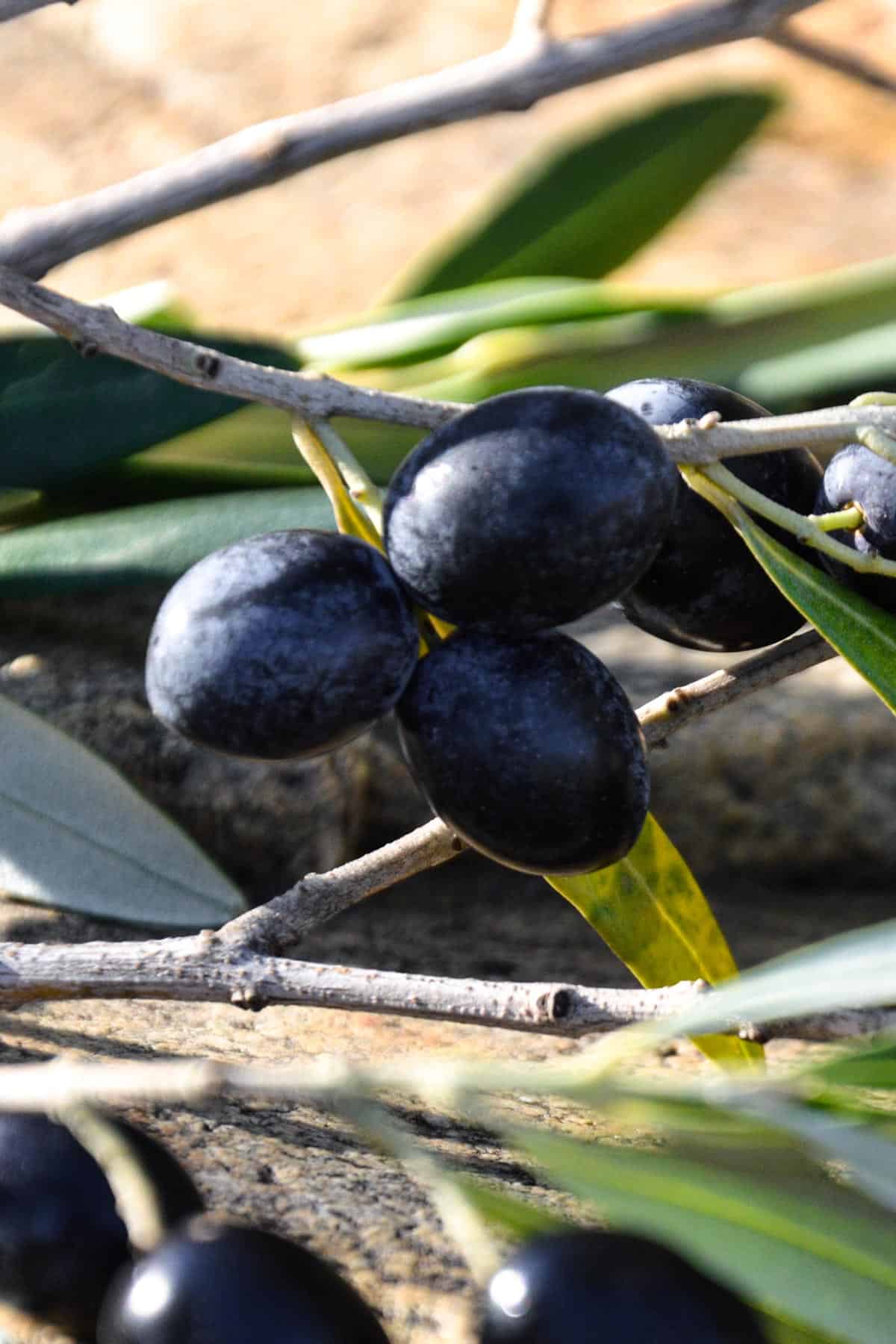
Fun fact(s): Black olives are simply ripe green olives, so the only difference is the time of harvest!
Taste and Texture: Rich, slightly salty, and tangy with meaty, soft, fleshy texture.
Uses: Olives are often used in Italian, Greek, and Mediterranean cuisines. Some of my favorite ways to eat olives are in pasta, pizza, tapenades, or to turn them into olive soups!
4. Black Pumpkin
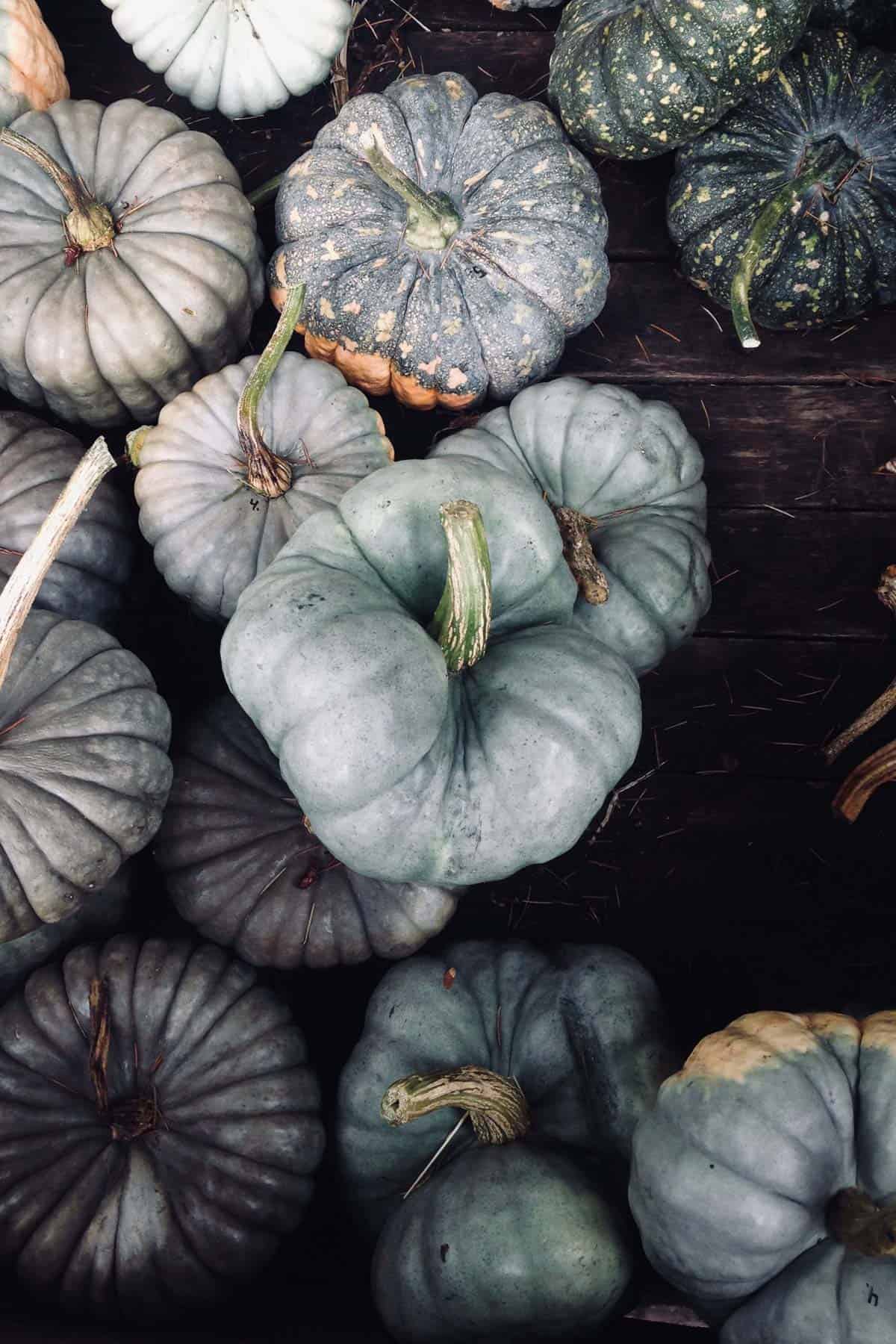
Fun fact(s): There are actually several varieties of black pumpkins out there with different shapes and textures! Popular ones include Thai Kang Kob and kabocha pumpkins. They all have dark skin with bright orange flesh inside. Perfect Halloween decoration, right? 🎃
Taste and Texture: The flesh tastes earthy, sweet, and slightly nutty – sounds delicious! Texture-wise, they’re tender with a creamy consistency when cooked.
Uses: Use them as perfect substitutes for regular pumpkin in classic recipes like pumpkin soup, pie, roasted pumpkin, or even risotto!
5. Black Potatoes
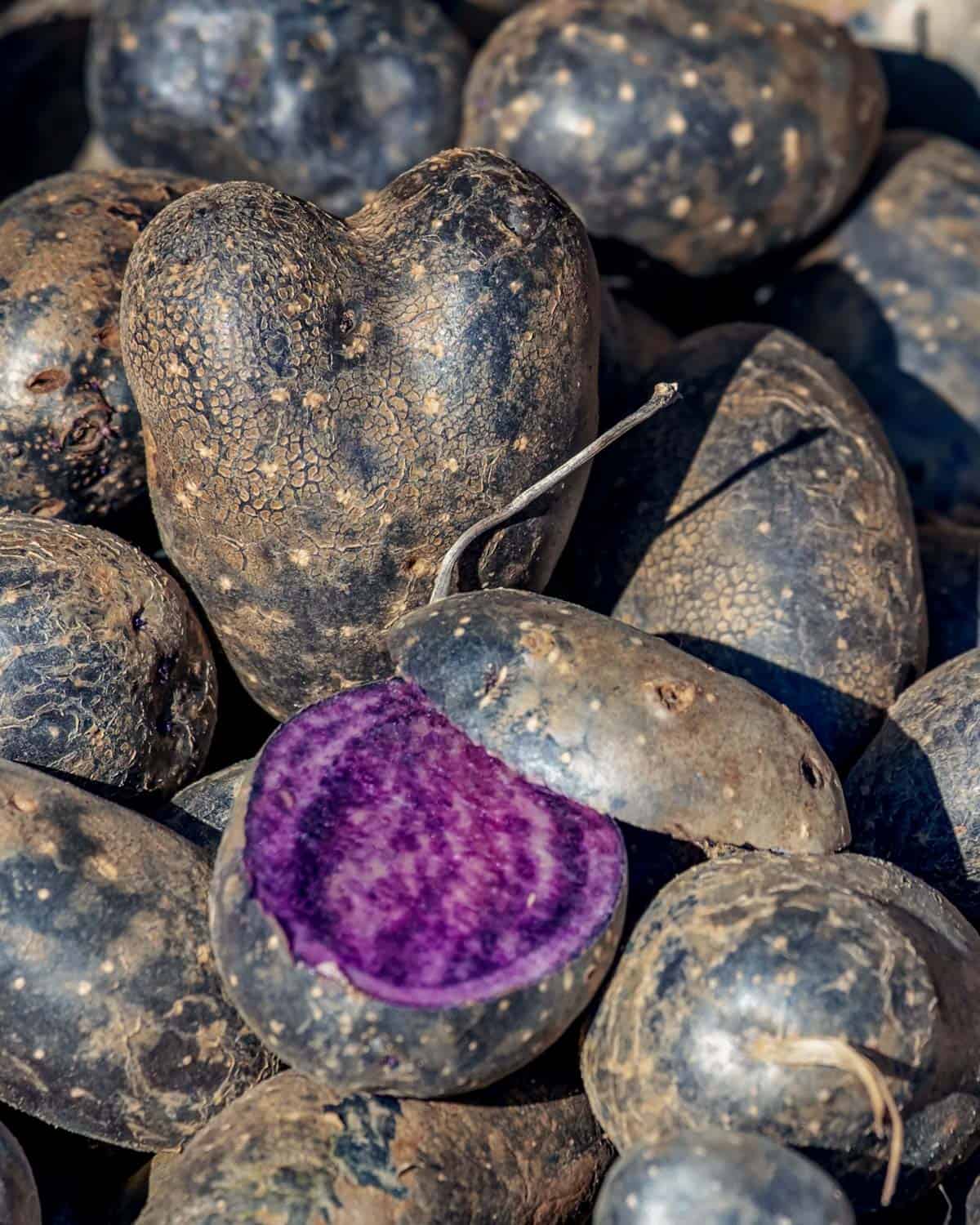
Fun fact(s): Common varieties include Shetland black, purple Peruvian, purple majesty, all blue, and Vitelotte potatoes.
I’m lucky that here in the Netherlands, purple potatoes are often sold in the winter months! Finding one when you go to the supermarkets made up for the cloudy, grey, and often rainy winter I would say!
Taste and Texture: The taste is similar to regular potatoes, but the texture varies by variety. Some hold their shape well for roasting, while others are more crumbly, making them perfect for mashing!
Uses: Depending on the texture of your black potatoes, the most suitable uses would vary too. If they’re crumbly and creamy, go for mashed potatoes. If they’re firmer, they’re great for roasting or homemade chips (maybe even make some adobo fries)!
6. Black Truffle
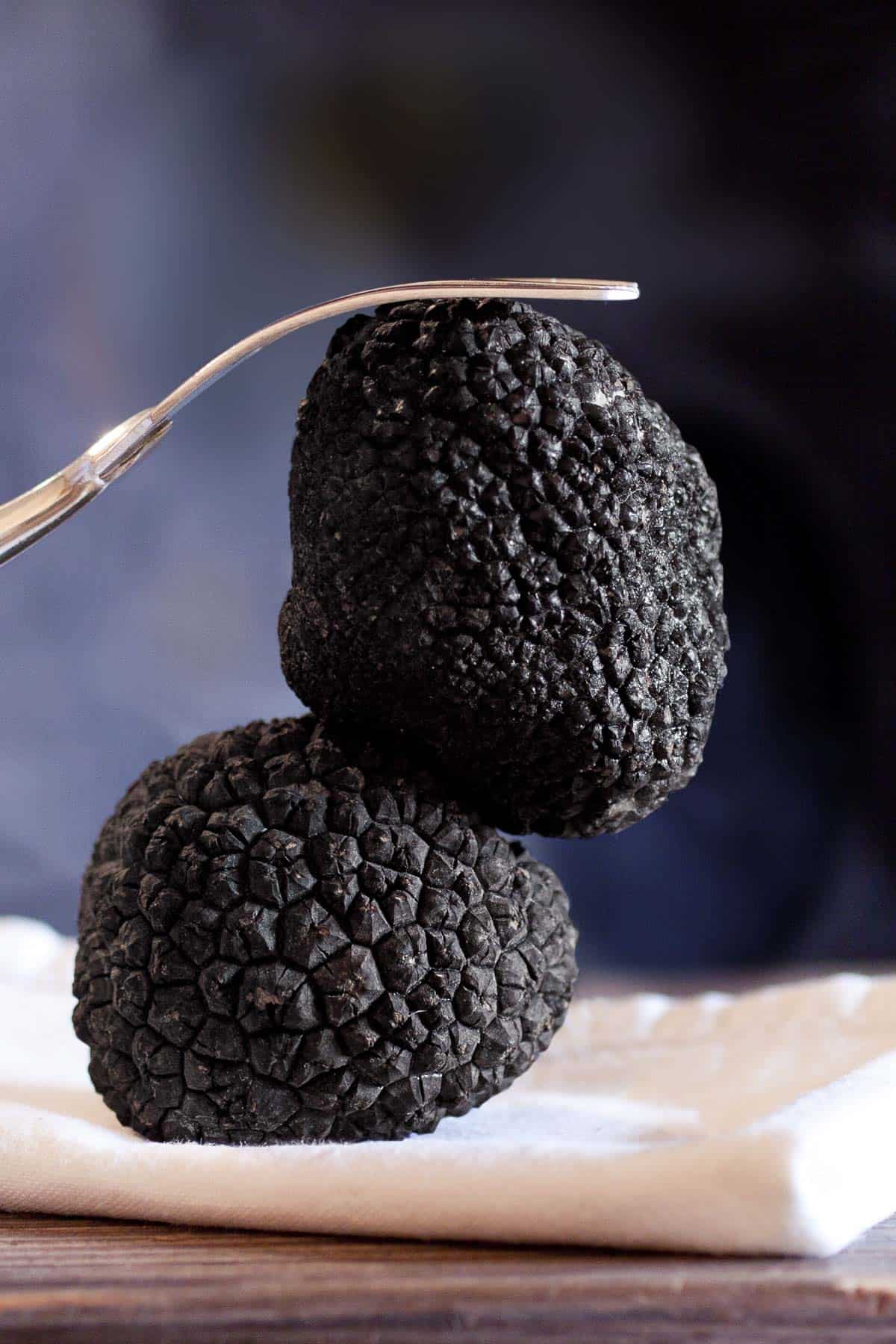
Fun fact(s): These grow underground, and since they’re hidden, you need trained dogs or pigs to find them! Then you have to carefully dig them out. No wonder they’re so expensive!
Taste and Texture: Black truffle tastes earthy, woody, and umami with a chocolatey tone. It has a deep rich flavor which makes it unsurprising that it is so well-loved all over the world.
Uses: A little goes a long way! Infuse them into oils or sauces, or shave them as a finishing touch.
7. Black Trumpet Mushroom
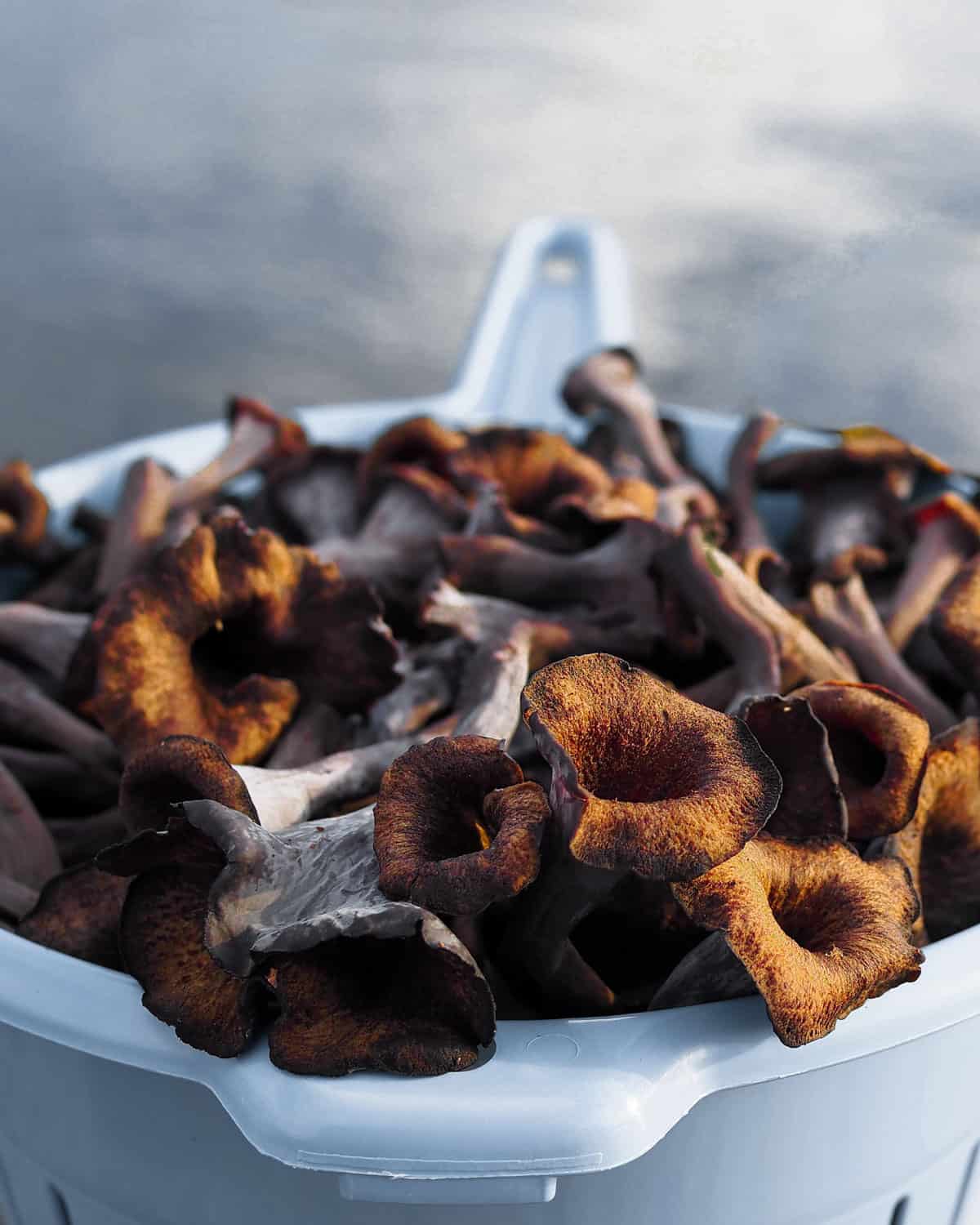
Fun fact(s): Looking like small trumpets coming out of the ground, I think it’s one of the cutest mushrooms ever! They also have hollow and fragile stems, which really remind me of trumpet flowers!
Taste and Texture: Earthy, rich, and smoky flavor. They have a meaty but tender texture.
Uses: They can be used in almost any savory dish but as always, if you’re trying it for the first time, I recommend not mixing too many flavors together. Think of simple recipes like stir-frying them with olive oil, or using them in your risotto!
8. Black Fungus
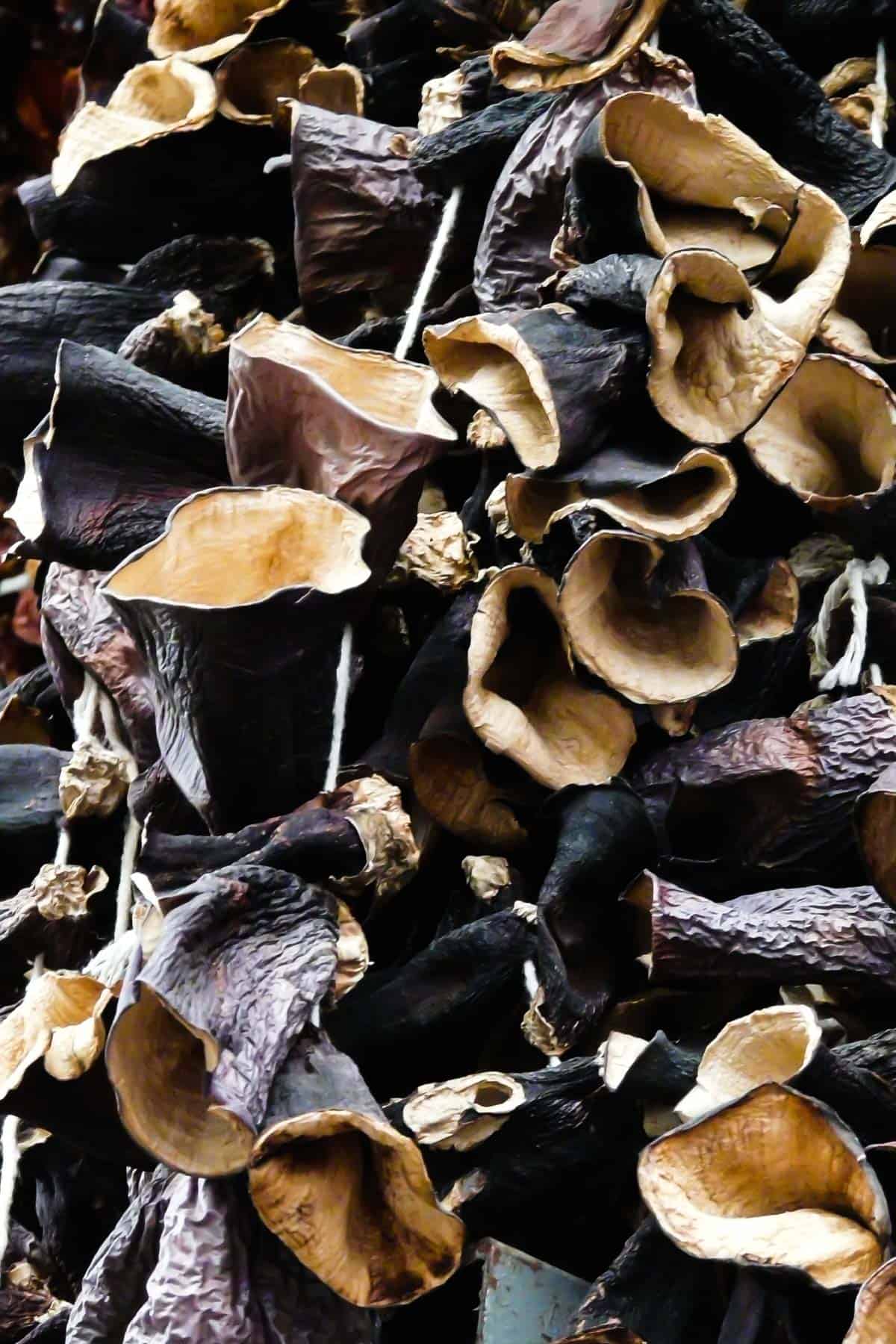
Fun fact(s):
- Black fungus is also called the “tree ear” or “cloud ear” fungus, they are most often used in Chinese and Japanese cuisines.
- As with many of the vegetables in this list, they are packed with nutrition! Like a lot of other types of mushrooms, they are low in calories and fats but high in protein and fiber.
- They’re sold dried in many Asian supermarkets and expand 3-4 times when soaked, so plan accordingly!
Taste and Texture: Mild, subtle flavor that absorbs whatever you’re cooking. Not meaty like button mushrooms, but rather slightly crunchy and jelly-like. The texture is really why people use them!
Uses: My mum likes to use them in soups but you can also use them in stir-fries such as these Garlic Chives & Black Fungus recipe. Or this Tofu with Mushroom Sauce recipe.
9. Black Carrots

Fun fact: Although they are believed to have originated in the Middle East, South Asia and East Asia, I’m lucky that here in the Netherlands where I live, most supermarkets would sell black/purple carrots, especially in the lead-up to Christmas. Cutting up a black carrot (another popular variety is the black nebula carrots) is such a sight since you can then see the deep, intense, pretty purple color inside the carrot!
Taste and Texture: Sweet and earthy, with some having a slight peppery note. Texture-wise, just like regular orange carrots – firm and crunchy!
Uses: Use them exactly like orange carrots! They make gorgeous decorations, but don’t preserve their purple color when cooked. To keep their vibrant color, simply use them raw in salads!
10. Black Garlic
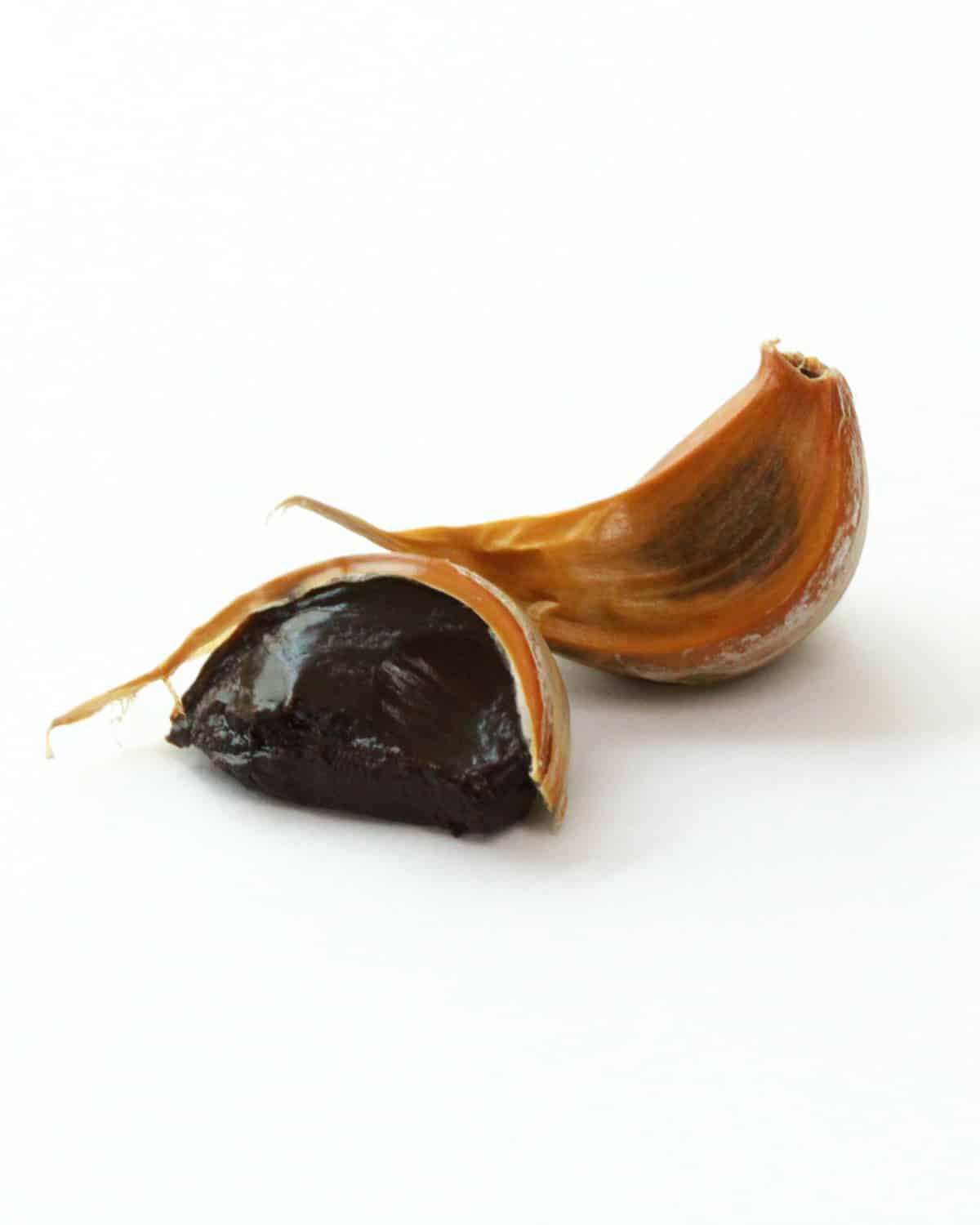
Fun fact: Black garlic is not a naturally growing variety of garlic. Instead, it is white garlic which has been aged over a couple of weeks (or even months). The garlic cloves go through the Maillard reaction to transform the proteins and sugars in the garlic to produce that distinctive flavor.
Taste and Texture: Totally unique! No garlicky taste at all – instead it’s sweet, umami, and slightly tangy with balsamic vinegar notes. Softer texture like plump dried fruits.
Uses: Although the taste is different, black garlic could be used to replace regular white garlic. Two of my most favorite ways to use black garlic are in making black garlic ramen and black garlic pasta. Some other ways people use black garlic are in making black garlic butter, black garlic aioli, sauces, and dressings.
11. Black Corn
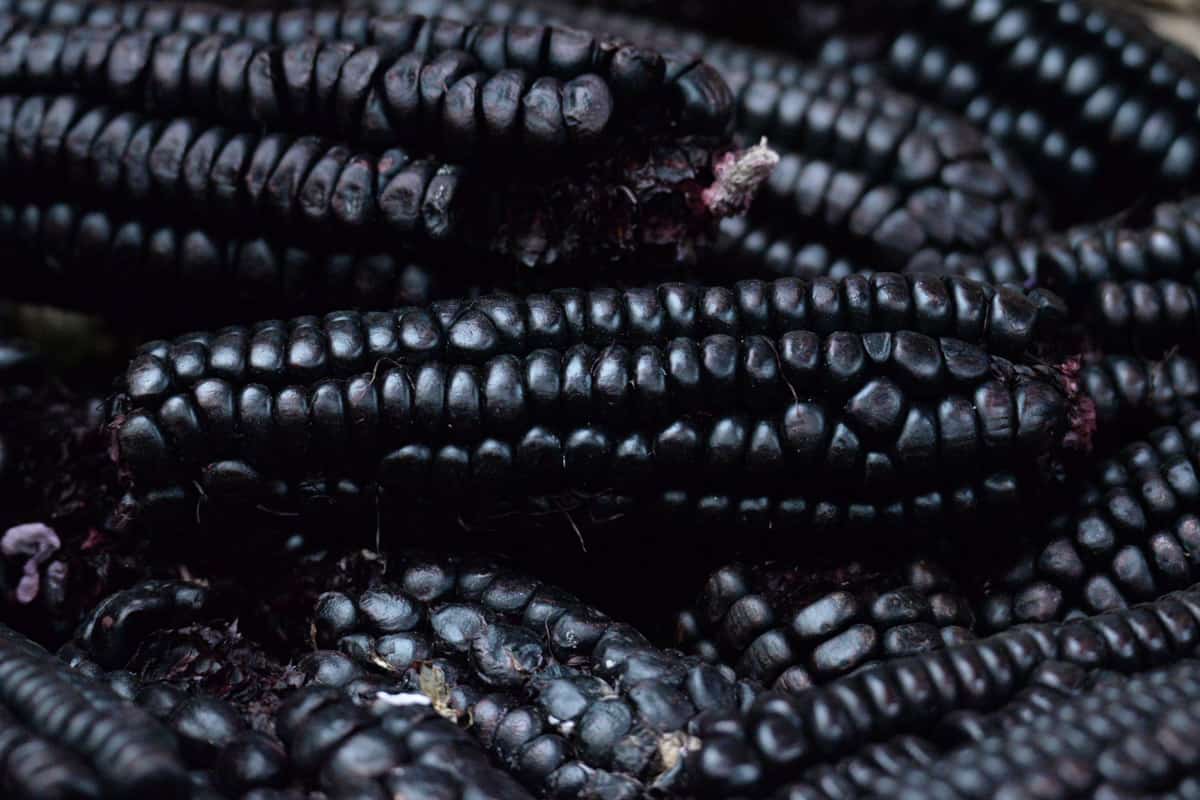
Fun fact(s): Black corn is an ancient corn variety grown by the Aztecs, which is also why they are often called black Aztec corn. One popular variety is called the Maiz Morado black corn.
Taste: Slightly sweeter and nuttier than regular corn with similar texture.
Uses: You can use them to substitute your regular corn in recipes. So think of tortillas, tamales, porridge, and even popcorn! Sounds like a great Halloween snack huh🎃👻
12. Black Radish
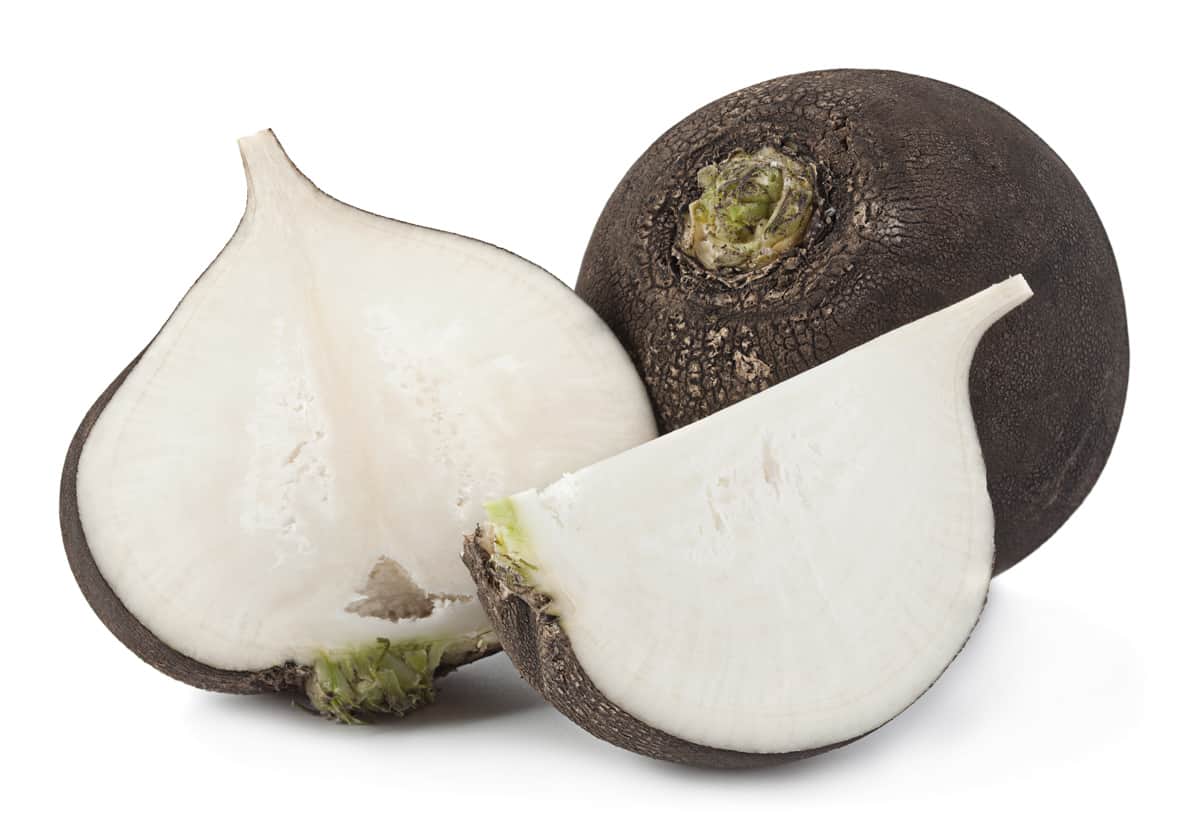
Fun fact: Black radishes have often been used in traditional remedies such as in alleviating cough and phlegm, and supporting digestive health in traditional Chinese medicine.
Taste and Texture: Sharp, pungent, and spicy taste! They’re used in small amounts for flavor bursts. Texture is similar to regular radish – firm and crunchy when raw.
Uses: Try roasting into chips or adding to salads! Balance that sharp taste with milder, sweeter ingredients.
13. Salsify
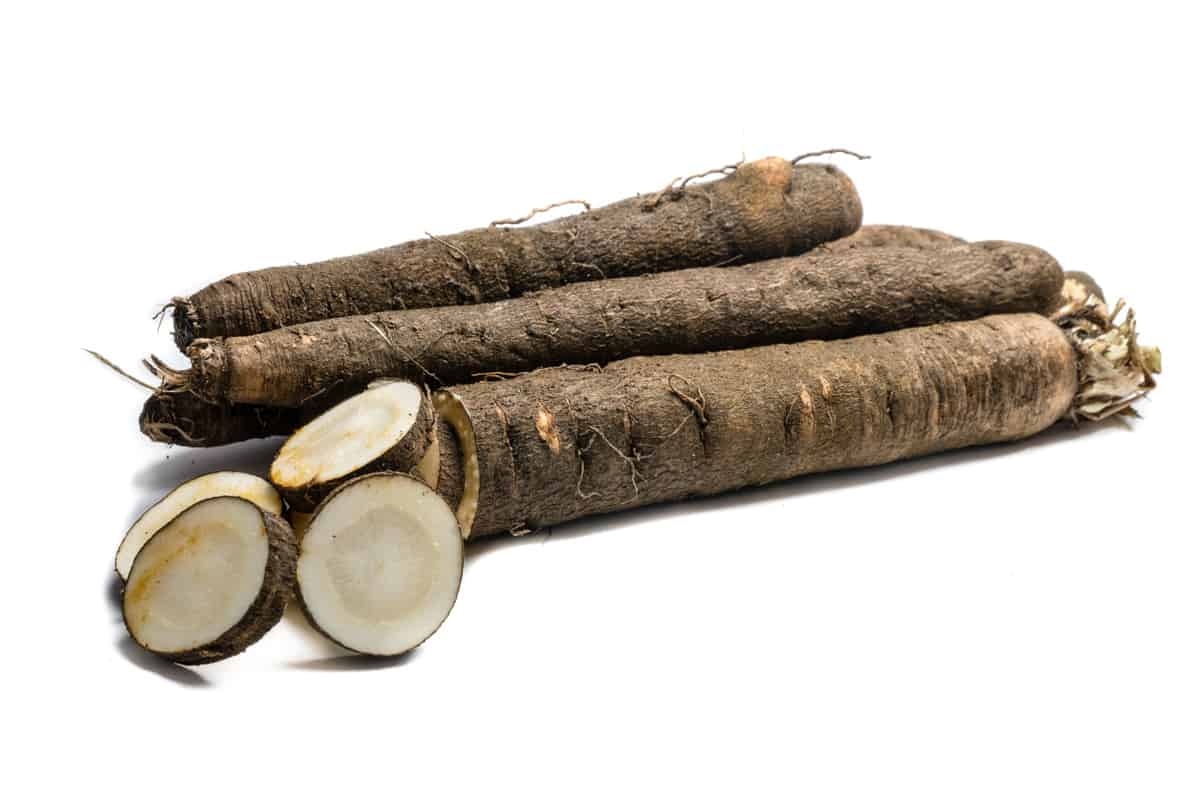
Fun fact(s): Salsify is also known as an oyster plant, because guess what, it kinda tastes like an oyster to some! Well, talking about some good vegan alternatives, isn’t it? 😉
Taste and Texture: The taste of black salsify isn’t as strong as it sounds like. In fact, it is actually quite mild. Since it is a root vegetable, it also has similar textures to parsnips and carrots.
Uses: Once you peel the skin, cook it like other root vegetables – roasting, soups, stews, or as a standalone veggie!
14. Nori Sheet
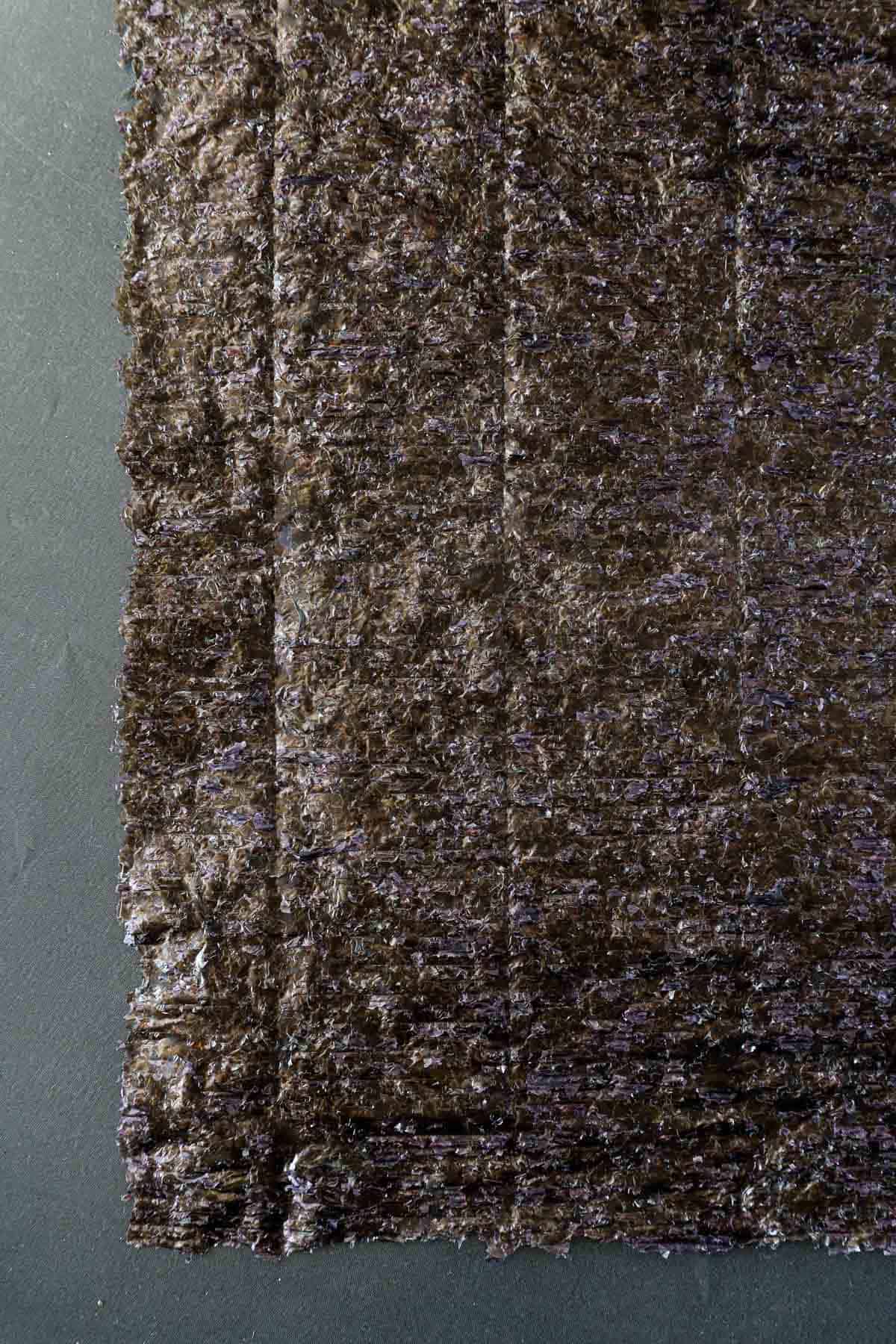
Fun fact(s):
- Although nori sheets look dark green to black, it is actually made from red algae. This red algae turns dark green when dried, which explains the color that we see.
- Nori sheets are made similarly to the way papers are made. The seaweed is shredded and pulped, before pressing them into thin sheets and drying them.
Taste and Texture: Mild, slightly salty with umami flavor. Thin and crisp with slightly chewy, brittle texture.
Uses: Famous for sushi! These days sushi comes in so many varieties from traditional to creative flavors, which you can all find in my vegan sushi recipes section. You can also shred them as a garnish for Japanese dishes!
Beans, Legumes, and Grains
15. Black Beans
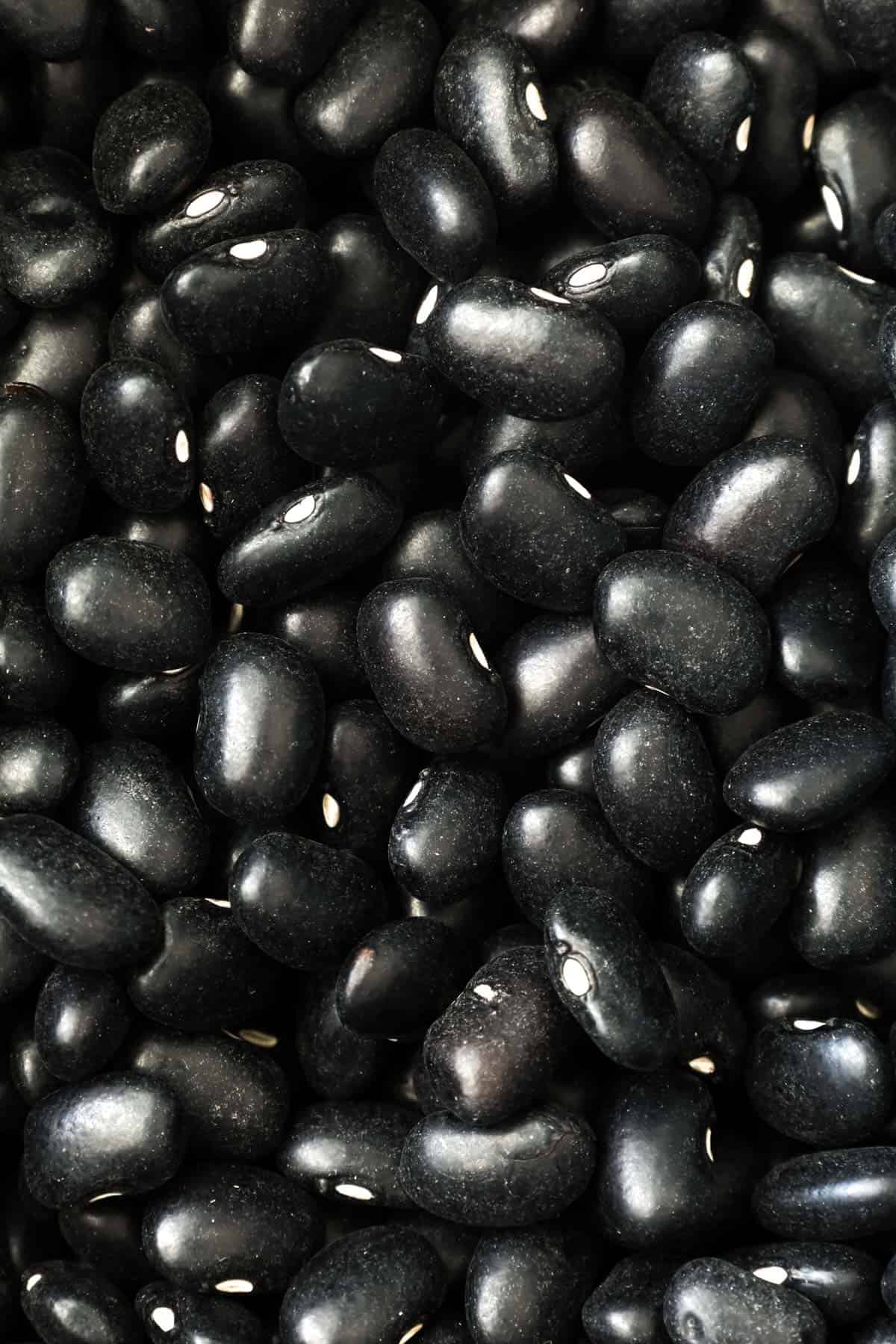
Fun fact(s): Black beans are a staple in many Latin American, Caribbean, and African cuisines!
Taste and Texture: Slightly sweet and earthy with nutty hints. Dense, meaty texture with smooth, creamy interior when cooked, perfect for so many dishes!
Uses: Ask any vegan and they’ve definitely heard of black beans! Great in chilis, stews, soups, salads, tacos, burritos, and blended into creamy dips like hummus!
My most recent favorite? Make this fudgy black bean brownies recipe I developed for a client of mine. They’re SO good!!
16. Black Chickpeas
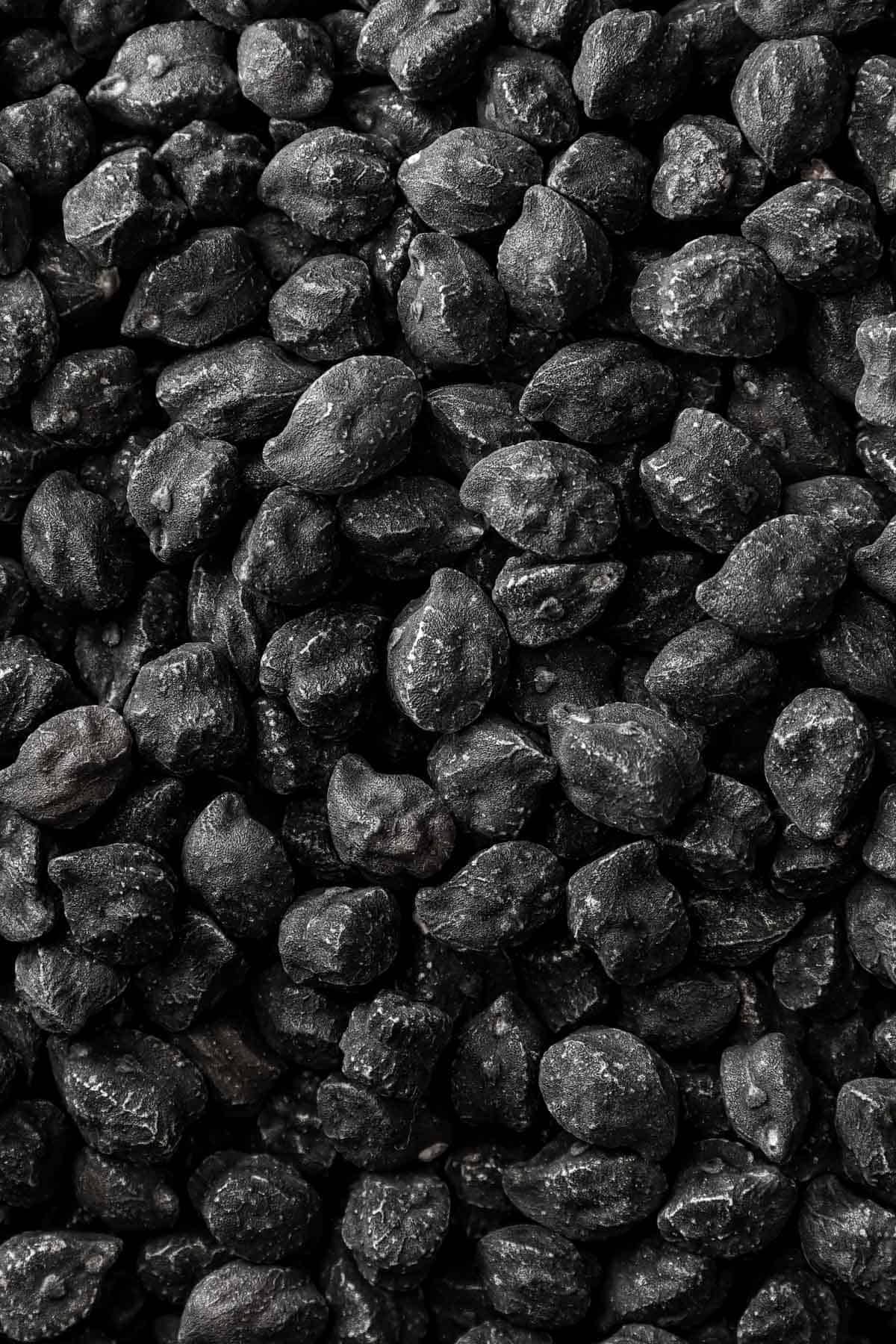
Fun fact(s): Two main kinds: Indian kala chana (brown color) and Italian ceci neri (deep black). Guess we just need Indonesia to make black chickpeas for an Eat Pray Love tour! 🍴🙏💖
Taste and Texture: Anyways, the Indian varieties are often brown in color while the Italian varieties are deep black in color. They are both smaller in size than the regular chickpeas, but are richer in taste and creamier in texture.
Uses: Perfect for curries or use them like regular chickpeas for that rich, creamy, luscious hummus!
PS: Have 5 minutes to spare? Make my 5-minute homemade hummus which will convert you from #TeamStoreBought to #TeamHomemade hummus right away!
17. Black Soybeans
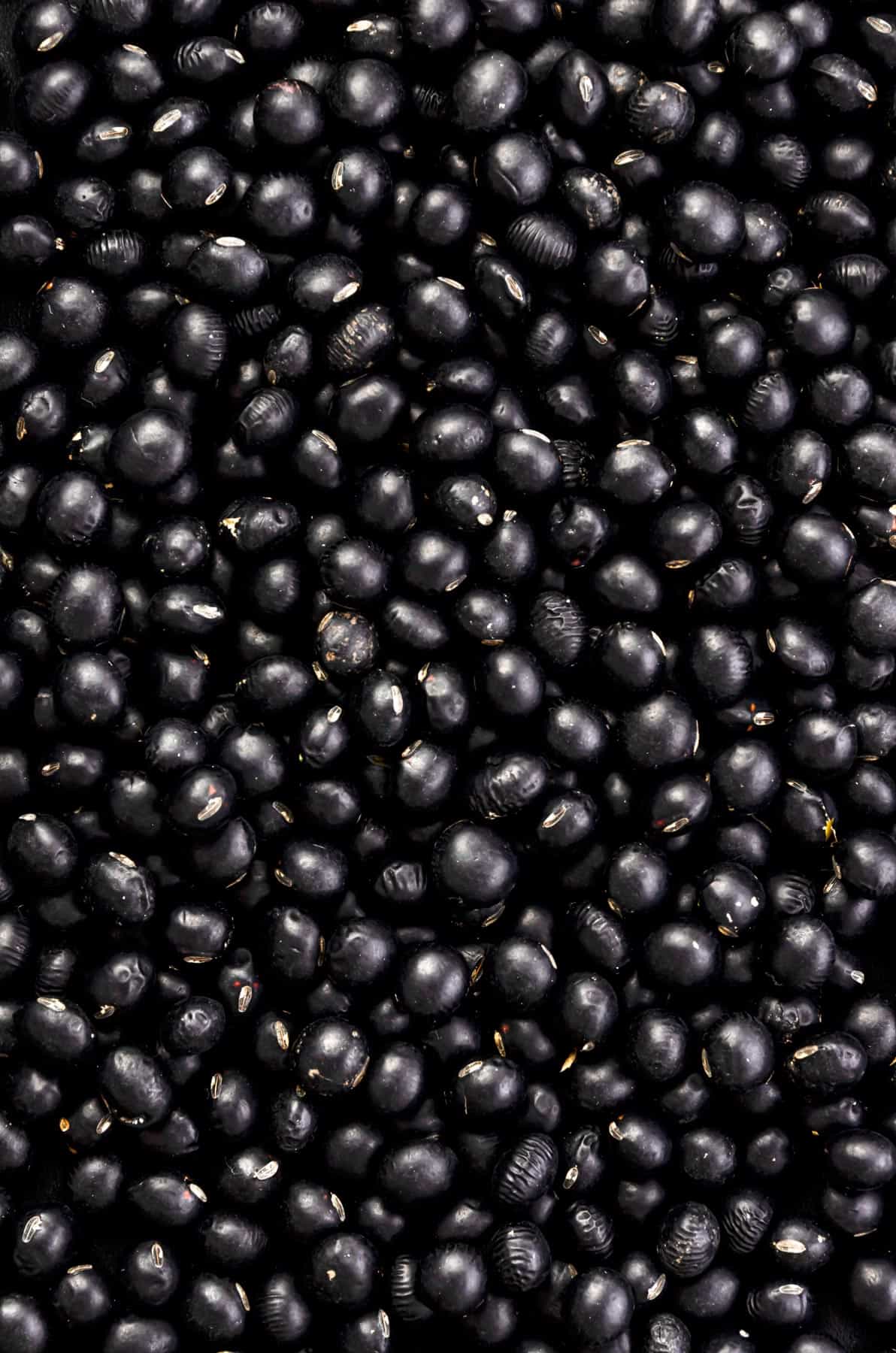
Fun fact(s): Surprise surprise, Chinese fermented black beans are not made from black beans, but from black soybeans instead. I didn’t know this before and almost put “fermented black beans” under “black beans” instead of “black soybeans” but I guess this information was lost somewhere in translation, isn’t it?
Anyways, similar to black beans, black soybeans are also a nutritional powerhouse.
Taste and Texture: Contrary to its name, it tastes closer to black beans than regular soybeans. Firm texture that holds up well when cooked with smooth, creamy interior.
Uses: Make black soy milk or Kuromame (sweetened black soybeans), which is a classic Japanese New Year delicacy!
18. Black Lentils
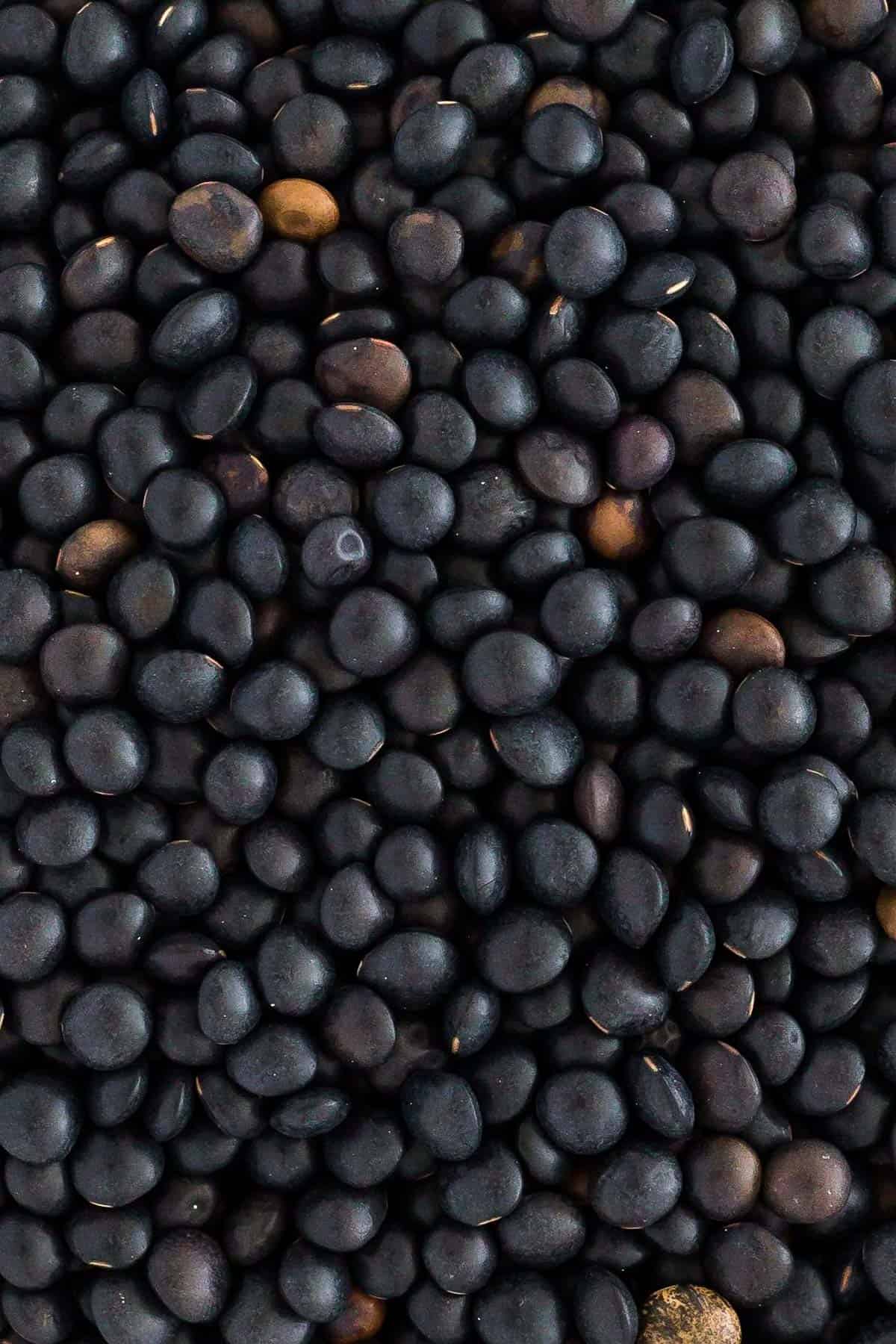
Fun fact(s): Sometimes called Beluga caviar lentils because they look like caviar! Note that Indian “urad dal” isn’t the same variety – it looks more like black mung beans.
Taste and Texture: More earthy and richer than other lentils. Holds shape well when cooked, but tastes creamy when mashed!
Uses: Since they hold their shape, they’re perfect for both salads and stews! Try black lentil salad with roasted vegetables or add them to soups for a more filling meal.
19. Black-Eyed Peas
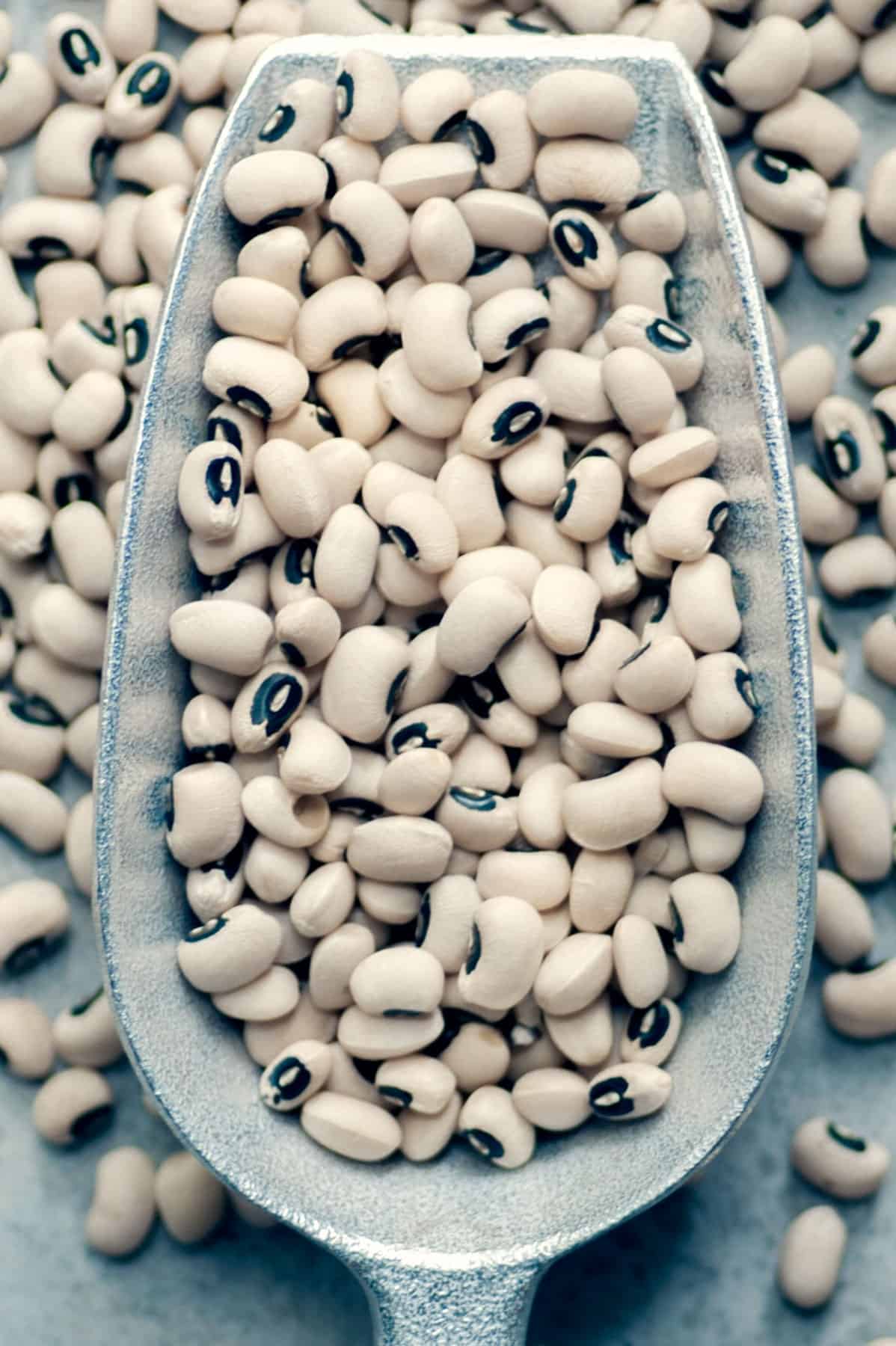
Fun fact(s): Black-eyed peas are often eaten on New Year’s Day in the Southern United States as they symbolize good luck and prosperity.
Taste and Texture: Earthy, slightly nutty flavor with creamy consistency when cooked. Soft and creamy inside, firm outside, just like other beans.
Uses: For a traditional Southern dish, try Hoppin’ John: a combination of black-eyed peas, rice, and pork. To make it plant-based, feel free to omit the pork.
Other recipes to try are black-eyed pea curry, stew, or even dip!
20. Black Badger Carlin Peas
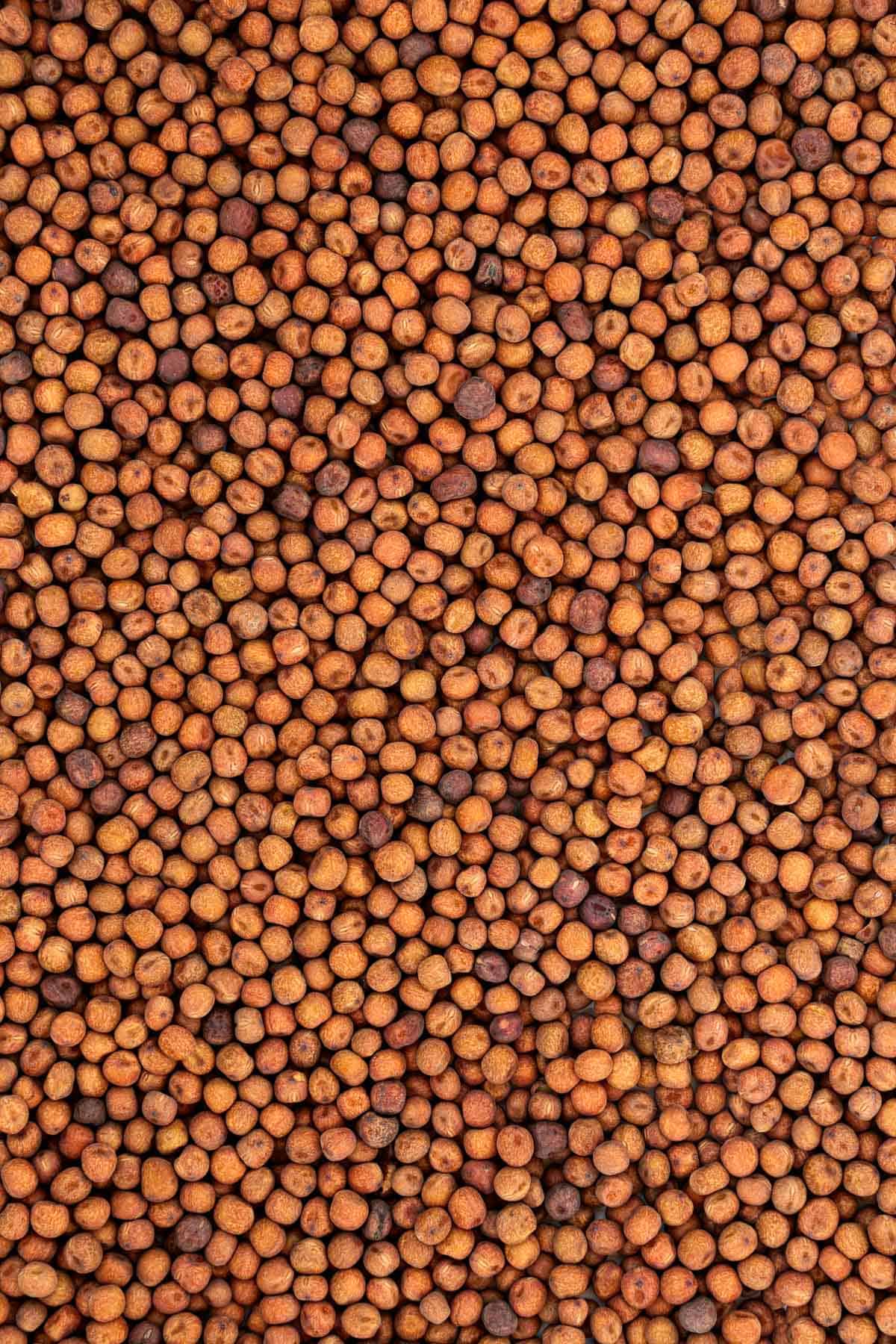
Fun fact(s): If black-eyed peas are often on New Year’s Day in the Southern United States, these black peas are eaten on November 5th in the North of England.
Taste and Texture: Slightly nutty and earthy, similar to green peas but firmer texture. Becomes creamy when cooked!
Uses: For a traditional recipe, try making some parched peas which are basically cooked black badger carlin peas, served with malt vinegar and salt. Or cook and then roast to make them crunchy!
21. Forbidden Black Rice
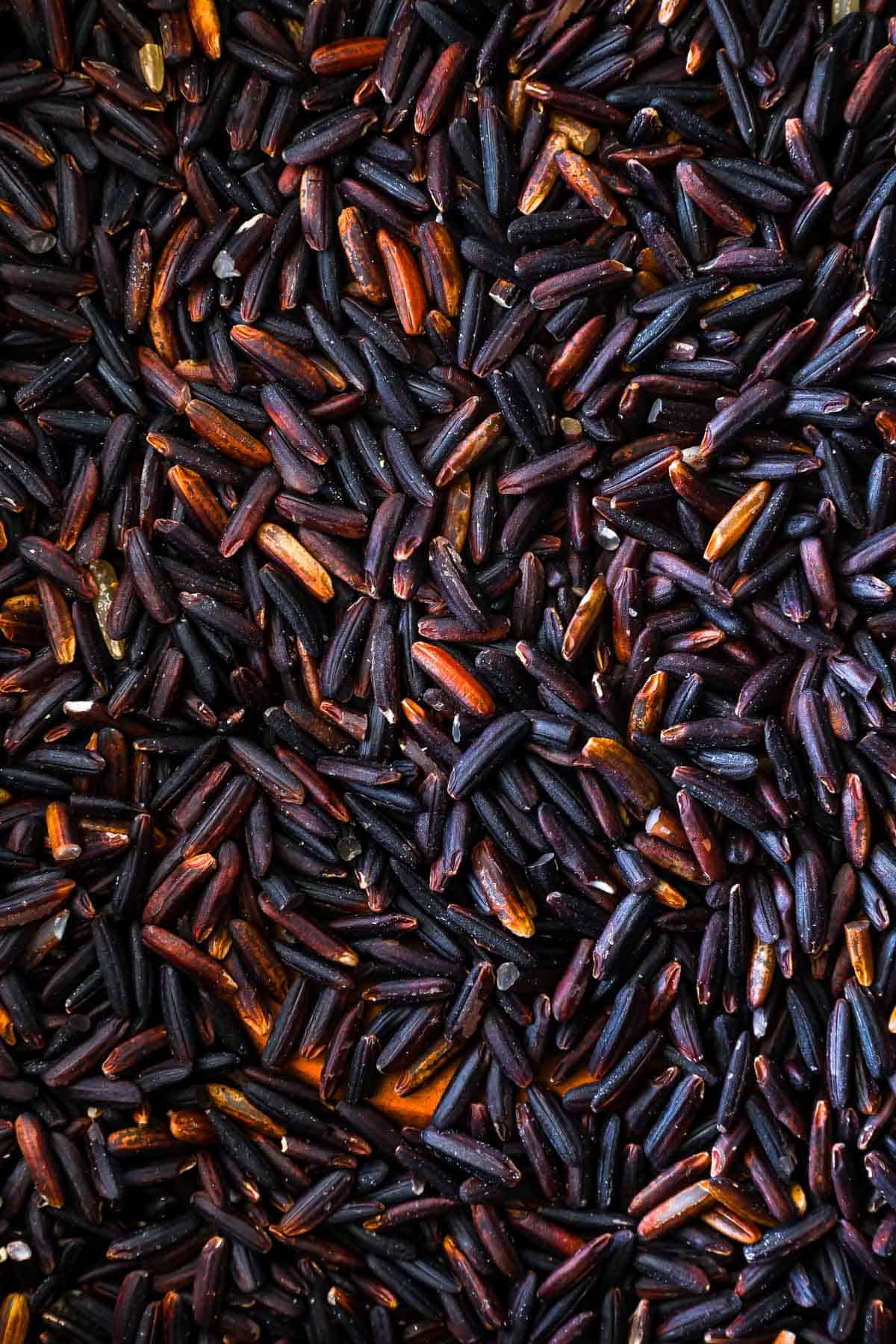
Fun fact(s): Called “forbidden rice” because in ancient China, it was reserved for the aristocracy and forbidden for common people! The intense color also makes a great natural purple dye.
Taste and Texture: Slightly nutty, more aromatic than regular rice with sweet, floral tones. Unlike its glutinous black rice cousin (which we will cover soon!), Chinese black rice is not so sticky and can be eaten just like regular rice.
Uses: Try my black forbidden rice sushi! You can also make Chinese congee (rice porridge) with black rice for a traditional recipe. Or maybe try making some Chinese sweet dumplings, so good!😋
22. Glutinous Black Rice
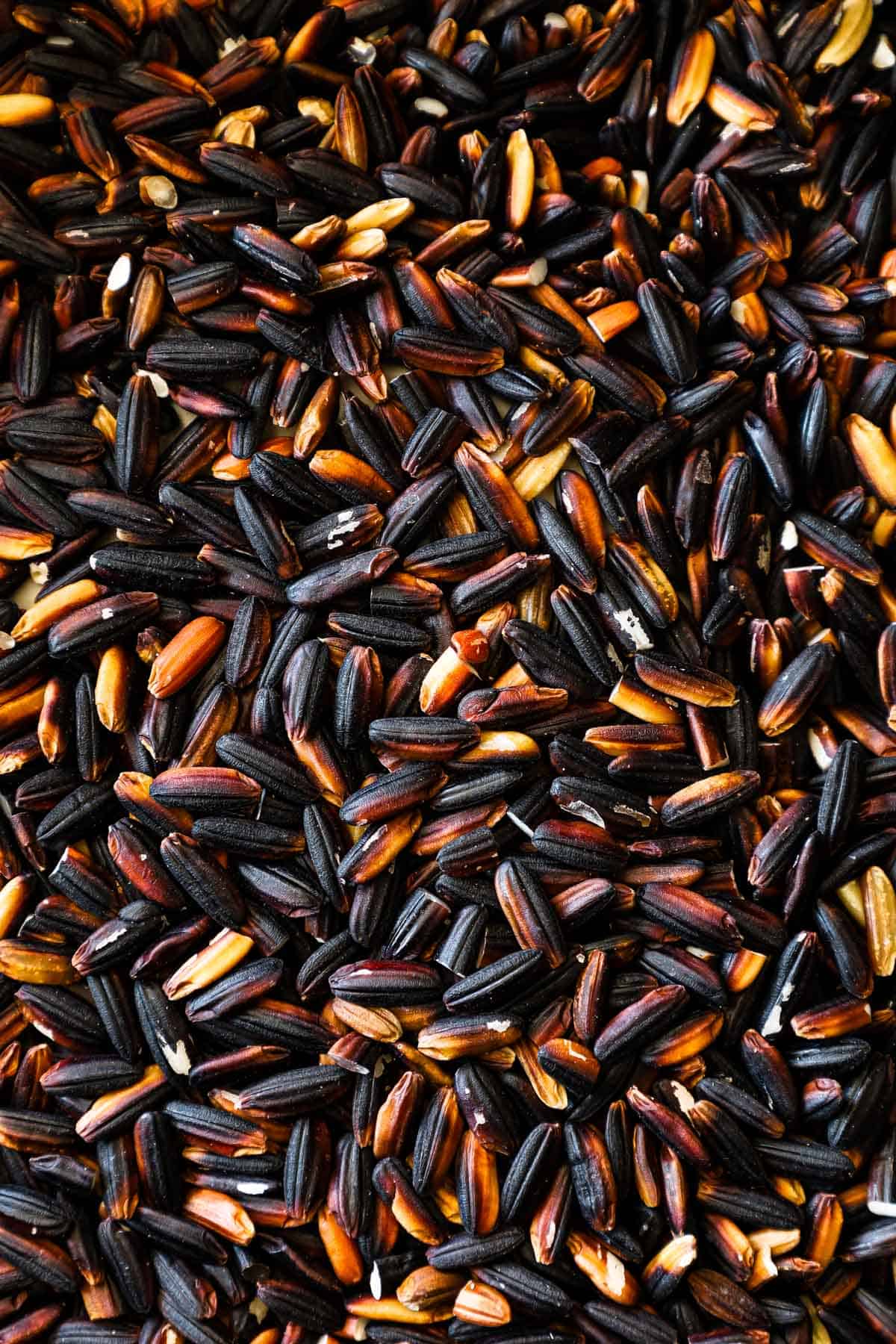
Fun fact(s): Similar to Chinese black rice but sticky! Super popular in Indonesia for breakfast/dessert recipes. The color also means that it’s rich in antioxidants which reduces the risk of chronic conditions such as heart disease, Alzheimer’s, and some types of cancer.
Taste and texture: Sticky and chewy unlike regular rice. Nutty, sweet flavor that’s more fragrant than white rice!
Uses: Commonly used in sweet dishes like Thai black sticky rice with mango and Indonesian black rice pudding, some of my favorite vegan desserts!
23. Black Quinoa
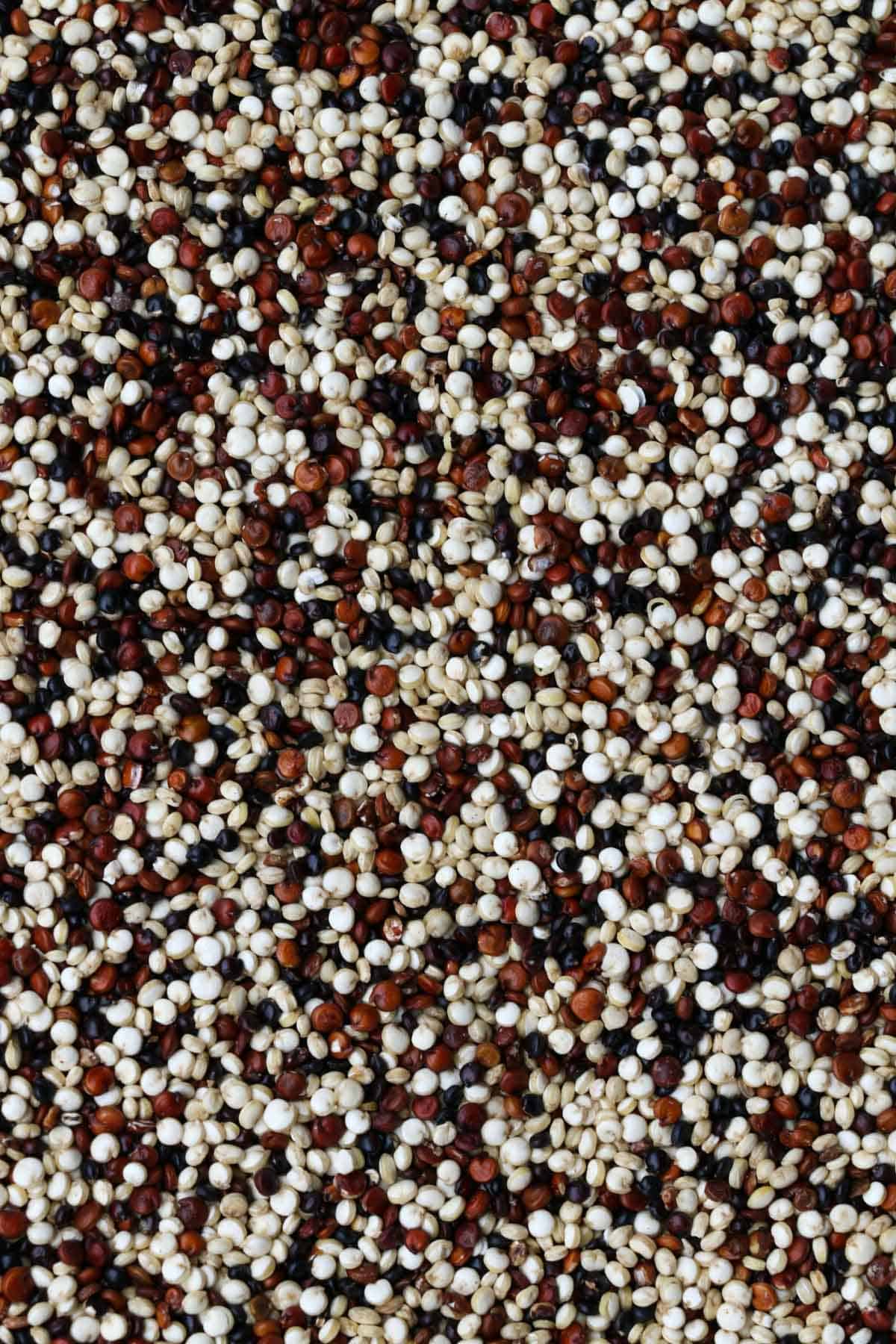
Fun fact(s): Technically a seed, not a grain, but classified as “pseudocereal”!
It contains all 9 essential amino acids, making it a very popular plant-based protein source. Other than that, it is also packed with nutrients and is naturally gluten-free.
Taste and Texture: Earthy, nutty like other quinoa but described as slightly sweeter. Firm, slightly crunchy when cooked.
Uses: Some delicious dishes to pair up black quinoa with are in salads or buddha bowls, poke bowls (such as this 30-minute Vegan Poke Bowl recipe), quinoa and bean burger, stuffed vegetables, or to serve your chilis with.
Seeds
24. Black Sesame Seeds
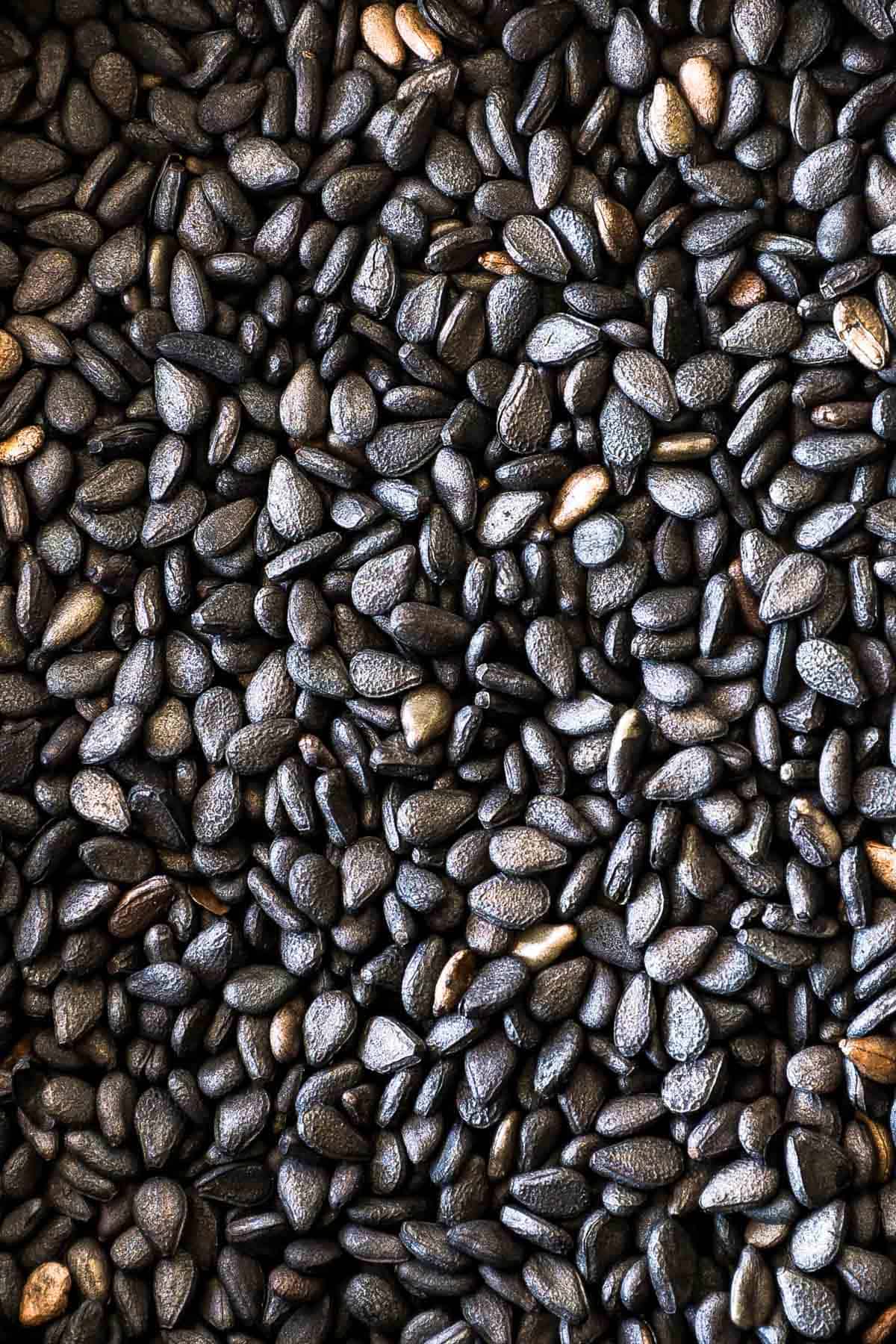
Fun fact(s): A very versatile ingredient widely produced in Asia (mainly Japan, China, and India) that can be used both in savory and sweet dishes!
Taste and Texture: Similar to the regular white (hulled) and brown (unhulled) sesame seeds, which btw made it to my List of 35 Brown Vegetables (+ Photos!), black sesame seeds have a nutty, earthy, and slightly bitter flavor. Similar to all other seeds, they have a firm and crunchy texture.
Uses: A popular way to prepare black sesame seeds is to make black sesame paste which could then be used as fillings or flavorings in many Asian desserts and baking. From using black sesame paste as a filling in buns, in rice flour balls (like this tang yuan), to ice cream! For savory recipes, try some black sesame-crusted tofu!
P.S. it’s also great as garnish for Asian-inspired recipes such as this quick and easy sticky tempeh or sticky tofu bowl recipe!
25. Poppy Seeds
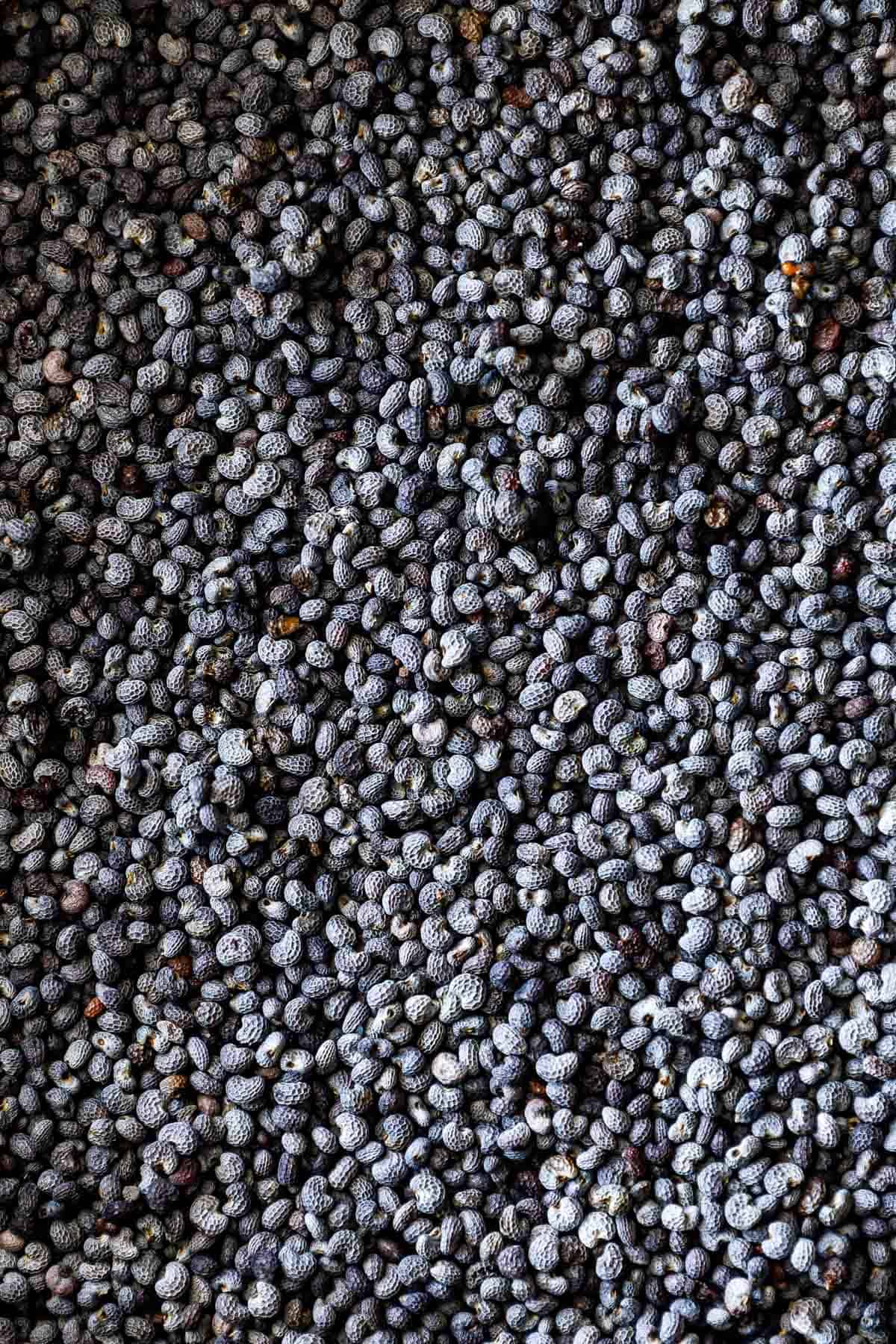
Fun fact(s): Same plants that produce beautiful poppy flowers! Beauty and practicality!
However, if you are expecting a drug test, it’s best to skip eating poppy seeds at least 48 hours before since although poppy seeds themselves do not contain opium content, they might be contaminated by opium alkaloids (such as morphine, codeine and thebaine) in their extraction process.
Taste and Texture: Nutty, slightly sweet with a crunchy, slightly gritty texture that adds nice depth to baked goods.
Uses: Poppy seeds to Eastern Europeans are like sesame seeds to Asians: it’s everywhere!
Thanks to a Hungarian colleague of mine, one poppy seed recipe that I am still super curious to try is this Hungarian Beigli (a Christmas delicacy of poppy seed and walnut roll). Another delicious way to eat poppy seeds is to incorporate them in your baked goods such as muffins, cakes, bagels, and bread.
26. Black Mustard Seeds

Fun fact(s): Contain the lowest seeds per pod: only 4 compared to white mustard (8) and brown mustard (20)!
Taste and Texture: Smaller with stronger flavor than brown or yellow varieties.
Uses: It is considered a staple in Indian kitchens as it is included in a lot of spice blends, which will often be tempered (fried in oil or ghee to release its aroma). Tempering also makes the flavor milder and slightly sweeter. Additionally, they are more often used in South Indian than in North Indian cooking.
Another popular use of mustard seeds is in pickles. They are often added in very small quantities due to their sharp taste!
27. Nigella Seeds
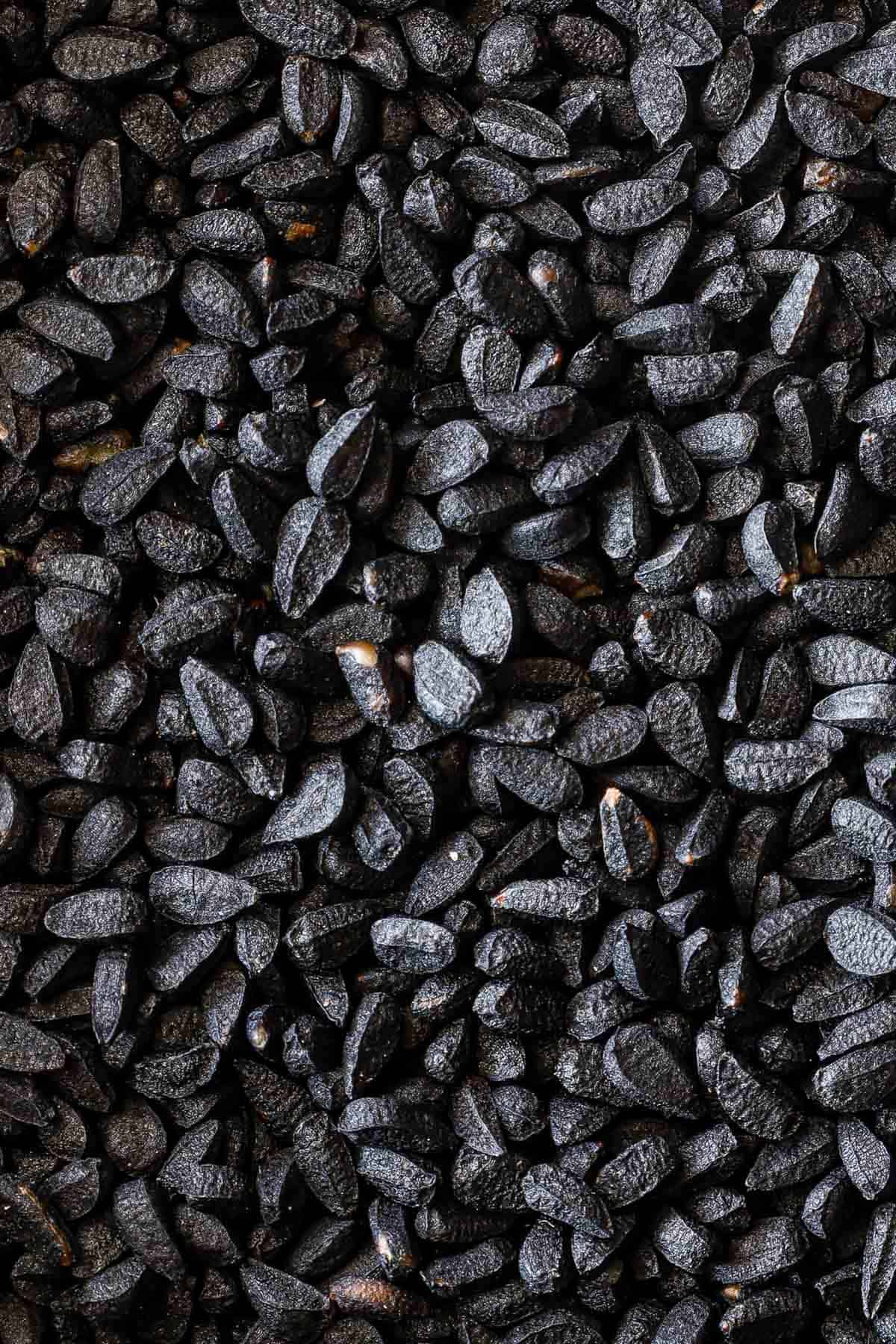
Fun fact(s): Often called “black cumin” but they’re from different plant species than real cumin.
Taste and Texture: Unique, slightly bitter flavor with onion-like hints (sometimes called black onion seeds). Notes of oregano and black pepper add complexity.
Uses: Common naan topping and ingredient in Indian, Middle Eastern, and North African spice blends. Try them in bread-baking and curry-making adventures! 🍞🍛
28. Chia Seeds
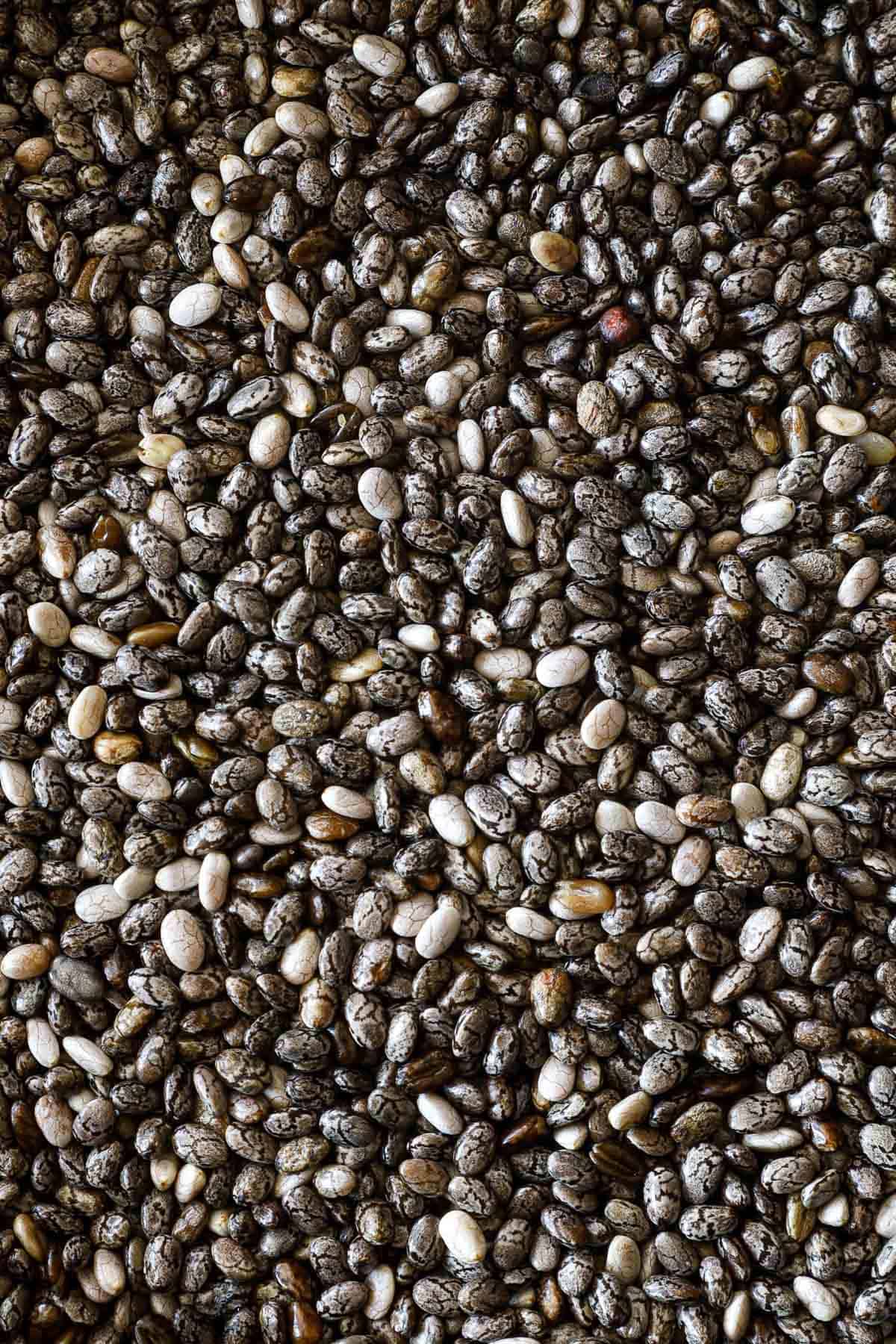
Fun fact(s): Chia seeds were considered an endurance food by the Aztecs and Mayans as the seeds were consumed on long hunting expeditions. The Tarahumara Indians are famous for their long-distance running capabilities and they consume chia seeds to fuel their runs!
Training for a marathon? Give chia seeds a try! 🏃♀️
Taste and Texture: Crunchy and firm when dry, but turns pudding-like after soaking (you might still feel the crunch though). Mild, neutral flavor.
Uses: Expand 12x when soaked! Great to mix in your smoothies or breakfast bowls, homemade chia jam, chia puddings (which is the cousin of a popular recipe of mine: 5-Minute Flax Seed Pudding with 3 variations!), or energy balls.
Spices
Small note: since spices are often only added in small quantities and not consumed whole, I will not elaborate on the texture in this section!
29. Black Pepper
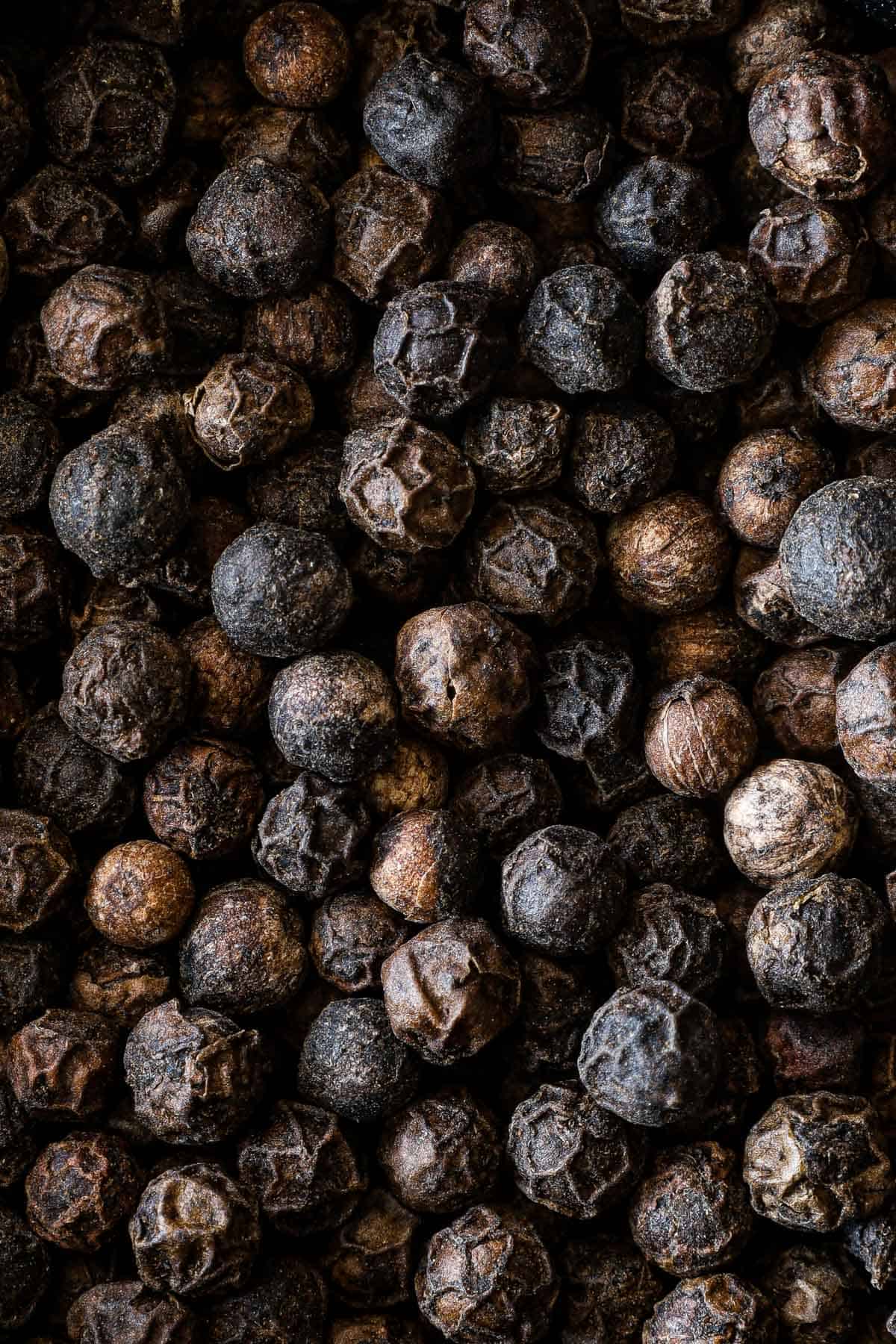
Fun fact(s): Did you know that black pepper actually comes from green peppercorns? The drying process is the one that turns them black!
Taste: Black pepper has a sharp flavor with a piney, woody, and citrusy notes.
Uses: Add them to any dish you’d like! And if you want to showcase the peppery note, I recommend making Black Pepper Aioli!
30. Vanilla
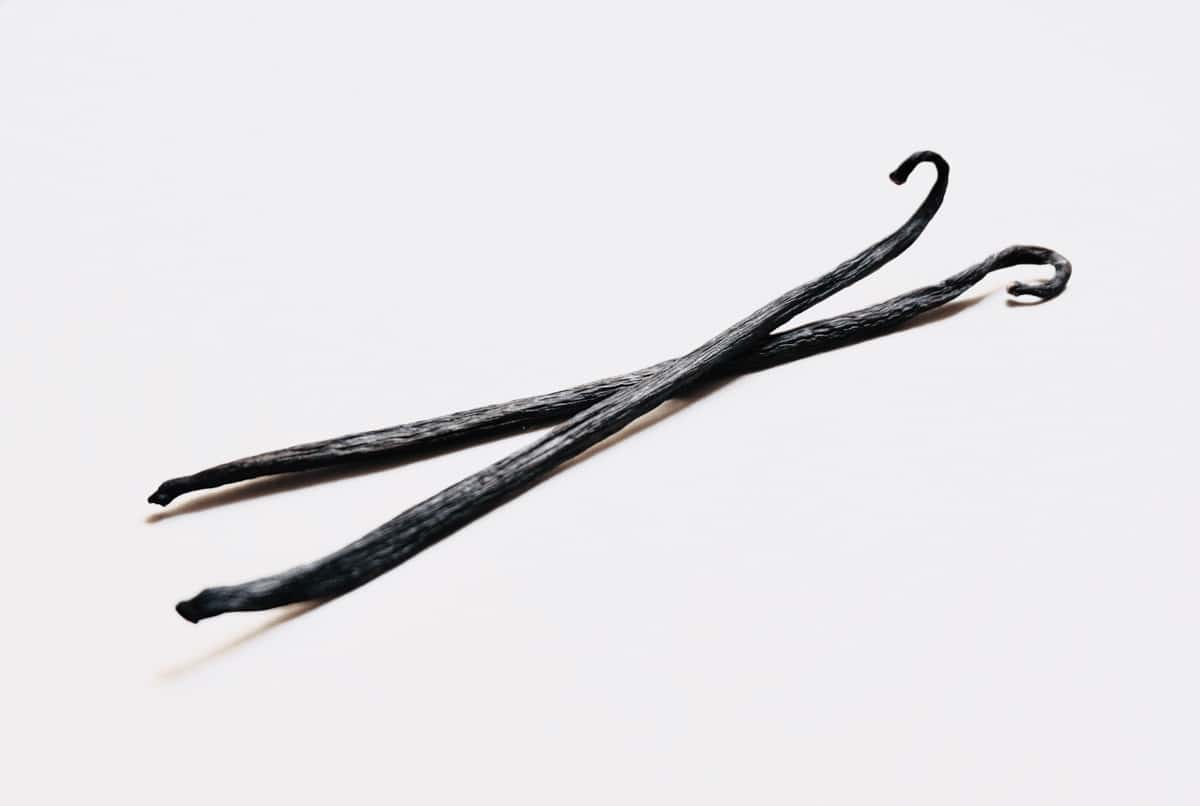
Fun fact(s): Comes from the orchid family and it’s the only orchid species producing edible fruit! Most vanilla is hand-pollinated rather than naturally pollinated, making it the second-most expensive spice after saffron.
Taste: It has a sweet and creamy taste, with subtle floral and fruity notes.
Uses: Vanilla is widely used in sweet recipes such as ice cream, cookies, pancakes, cakes, puddings, vanilla matcha latte, you name it!
31. Black Cardamom
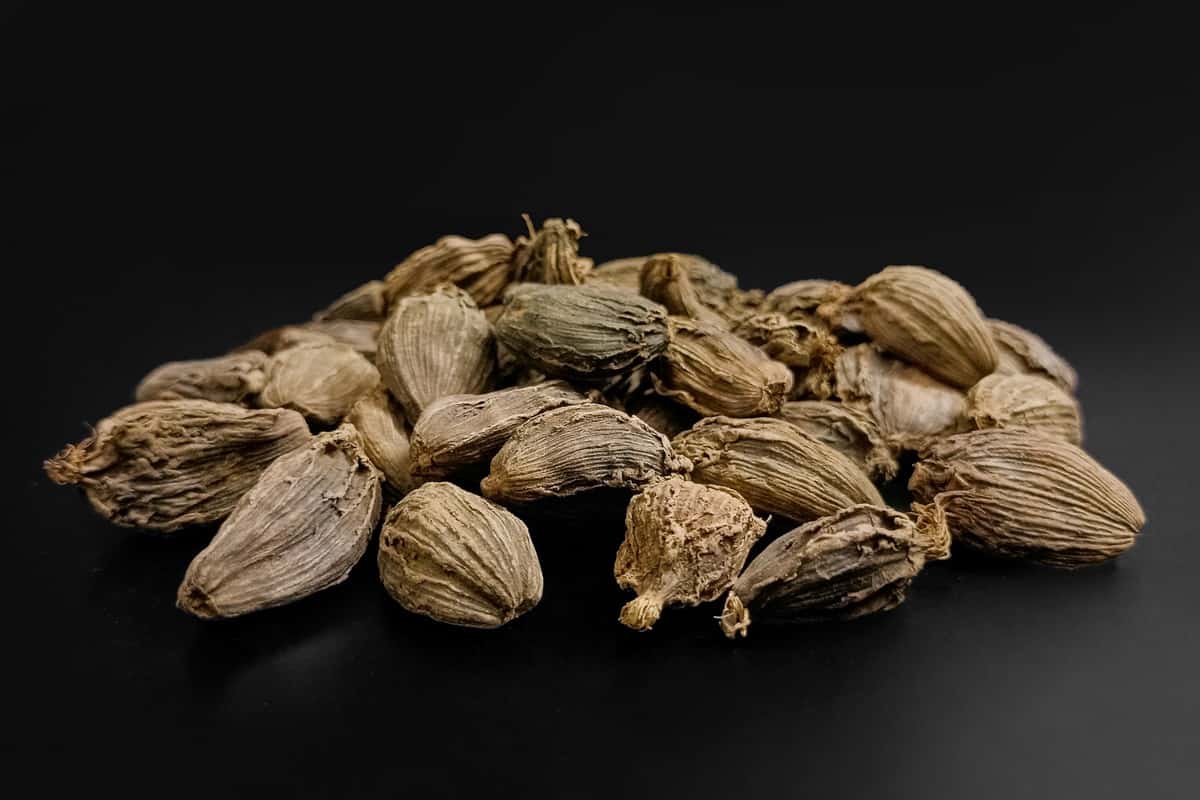
Fun fact(s): If vanilla is second most expensive spice, cardamom sits in third place!
Taste: Smoky, earthy, slightly sweet with bitter hints. Remember, a little goes a long way!
Uses: Unlike a lot of spices where you can use one variety to substitute for the other, don’t try doing that for black cardamoms! Green is subtle, black is much stronger. If substituting, use just a tiny bit in curries, stews, and rice dishes.
32. Activated Charcoal
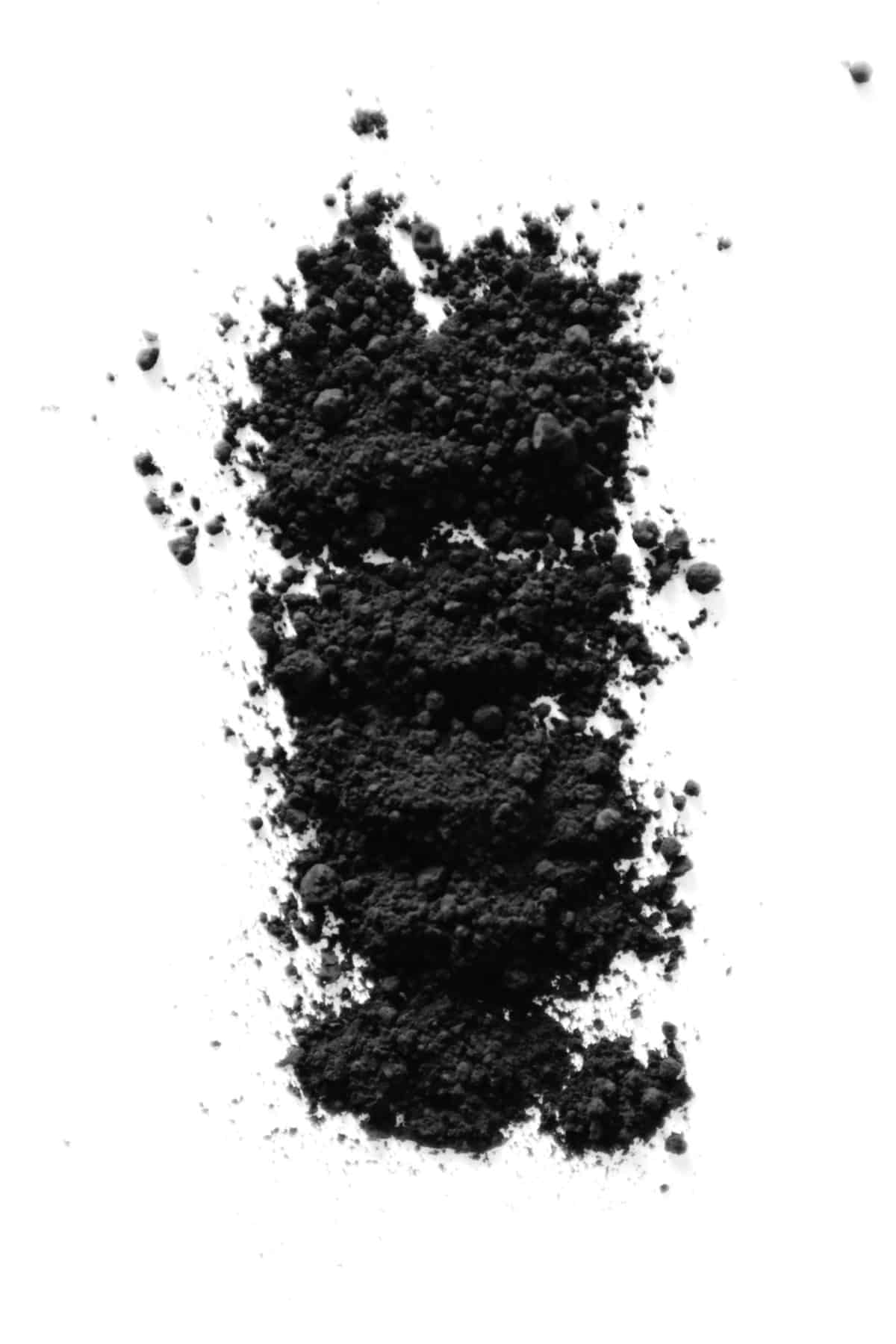
Fun fact(s): Activated charcoal is actually a manufactured product and cannot be found naturally in food. For that reason, just to be clear, I do not recommend prolonged and regular consumption of activated charcoal.
Moreover, Healthline concludes that studies supporting its health benefits are older studies and have a limited scope. Just want to mention this since this is the exception to the rule of thumb that darker food means more antioxidants, which is because activated charcoal doesn’t grow naturally.
Taste: Although charcoal has an intense and striking black color, it is both tasteless and odorless.
Uses: Perfect natural food colorant for black burger buns, pizza crusts, pancakes, cocktails, and my favorite…ice cream!
33. Urfa Biber
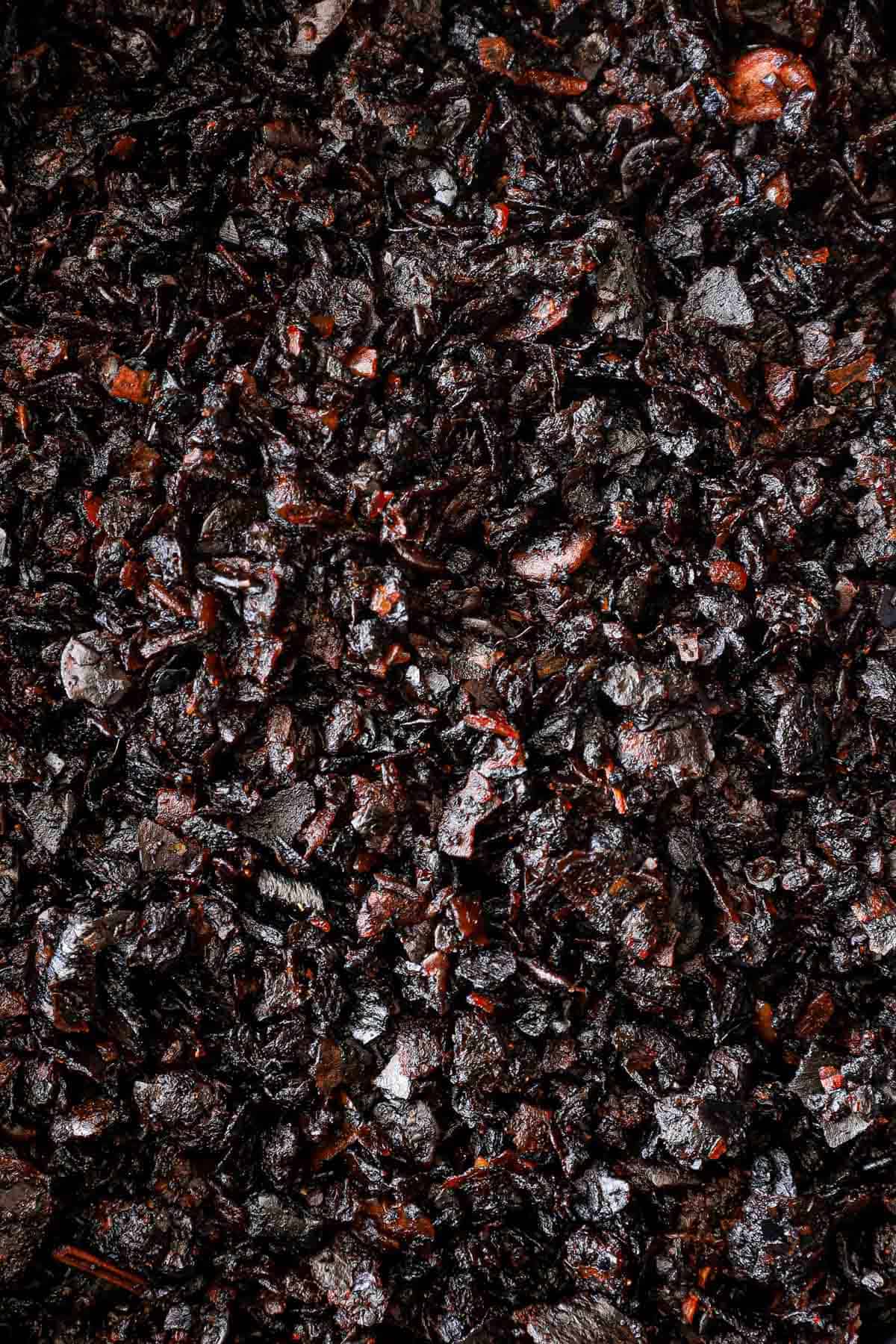
Fun fact(s): Fan of sun-dried tomatoes? How about sun-dried chili peppers? Meet Urfa biber! They’re dried in the sun during the day and wrapped in fabric at night to preserve natural oils!
Taste: Smoky, earthy, spicy with subtle chocolate-like sweetness. The first time I tried this, I immediately fell in love with the flavor depth!
Uses: Use them as spice rubs, in your stews, or as toppings if you’d like a bit of flavor boost to your meal. Urfa biber can even be added to chocolatey desserts to add a bit of smokiness to balance out the sweetness!

FAQ
Let me know if you’d like more posts like this!
If you like this post, check out this 25 Pink Vegetables post (again, including pictures and more details, making it the most complete pink vegetables list on the internet)!💗 Or my 30 Black Fruits List🖤, 30 White Fruits or 35 White Vegetables List🤍, 31 Brown Fruits List!🤎 , 25 Red Vegetables❤️, 30 Orange Fruits or 30 Orange Vegetables🧡, 30 Purple Vegetables💜, 17 Blue Vegetables💙, or 20 Yellow Vegetables List💛 for a brighter day!







You are a true Jem!
Thank you so much for doing this! Wow, I did not know so many black vegetables and the like even existed! Thank you so much again!
Thank you Hannah! It’s truly a wonder that there are so many varieties of fruits & vegetables and I’m glad you like this post!
Wow, amazing!
Great list, makes it very easy for me to scout for black vegetables.
A great and very handy list, thank you! Was fun reading it and the pictures look beautiful 😍
Indeed it’s the most complete list! Love the pictures and the fun facts too!